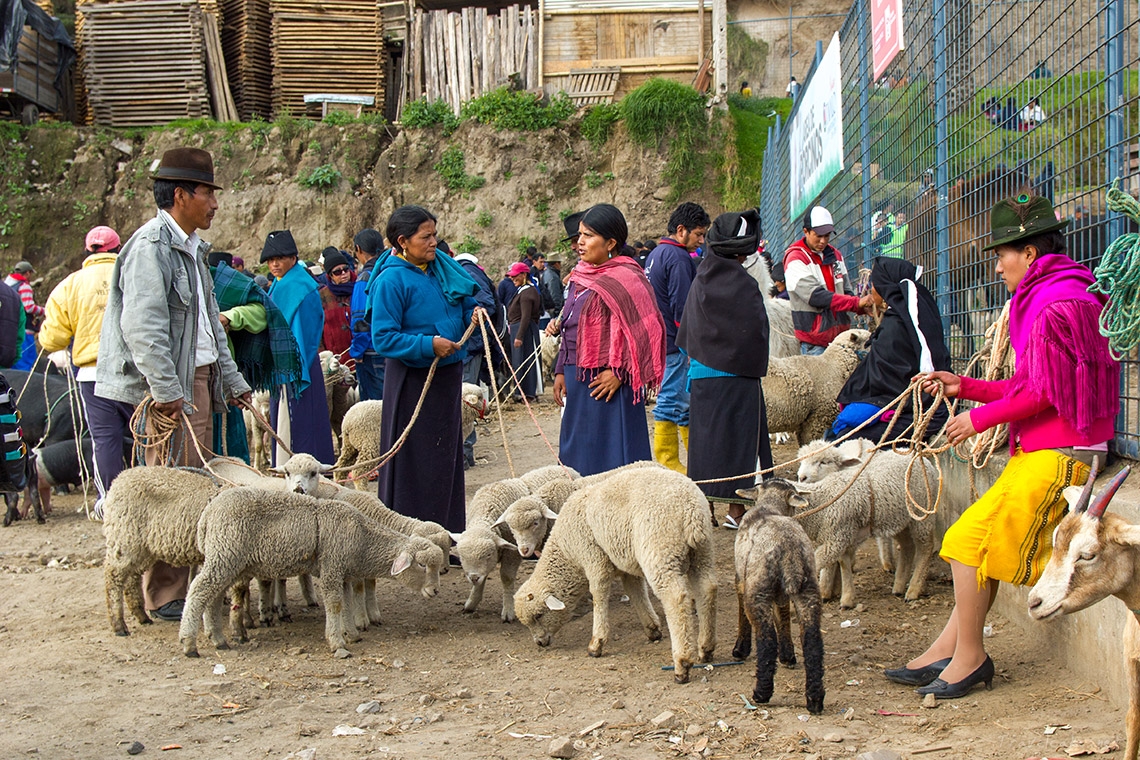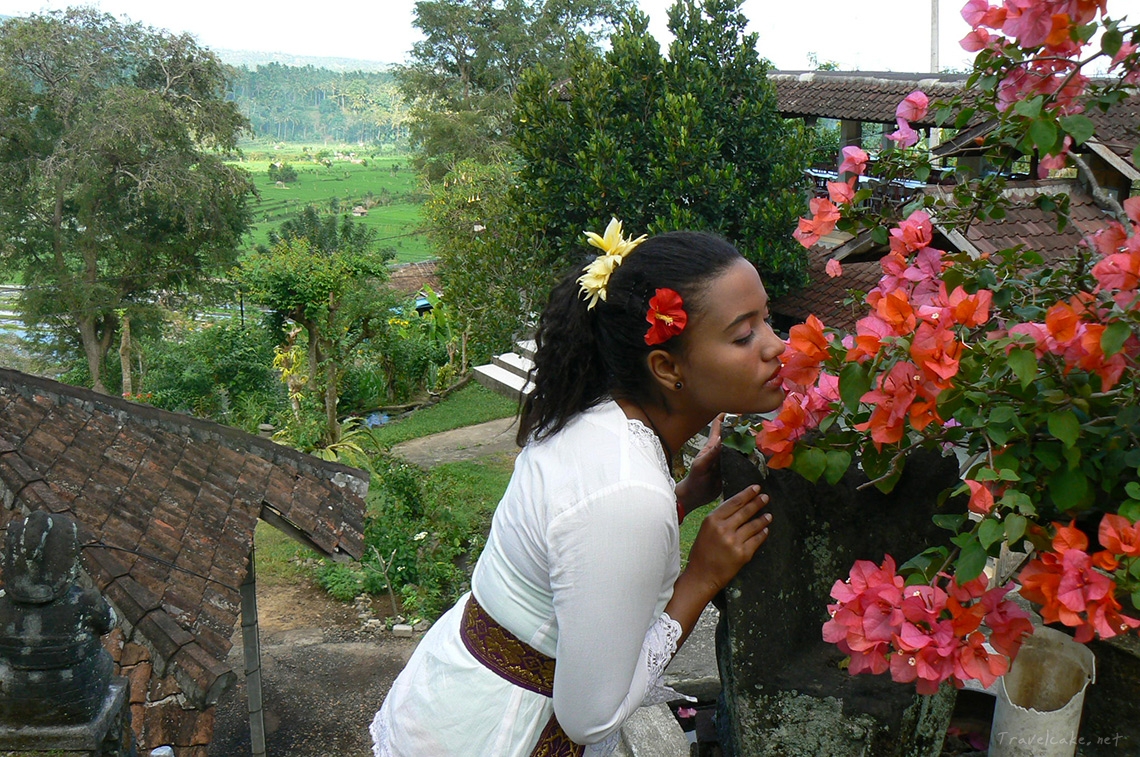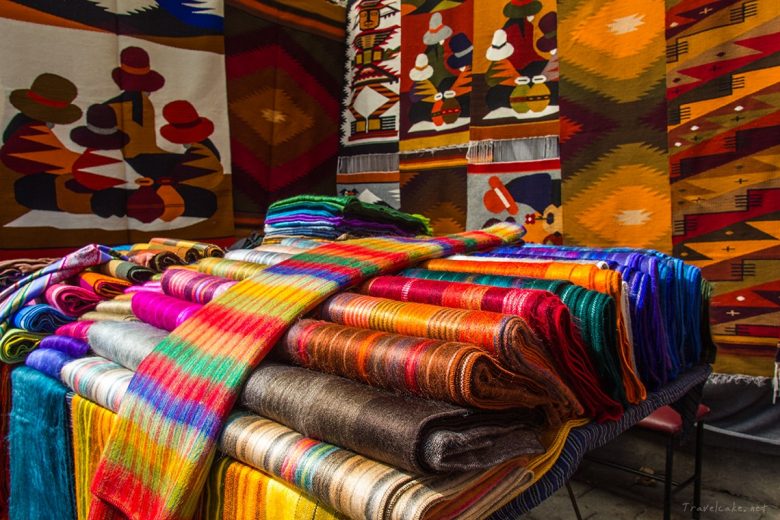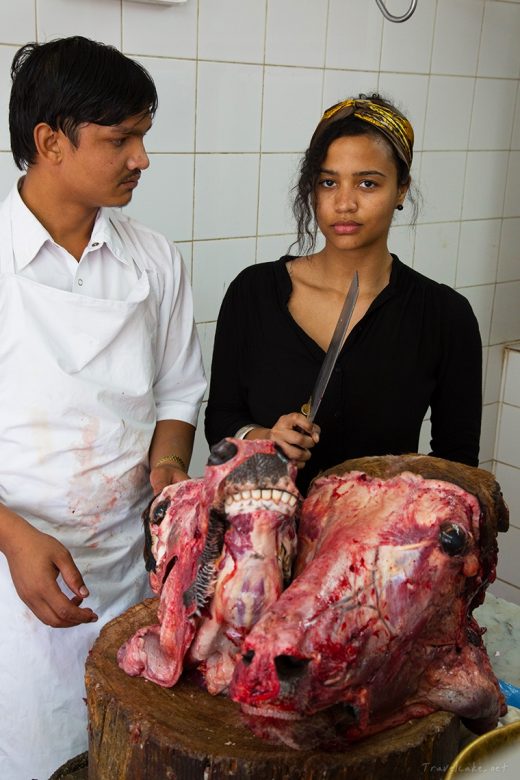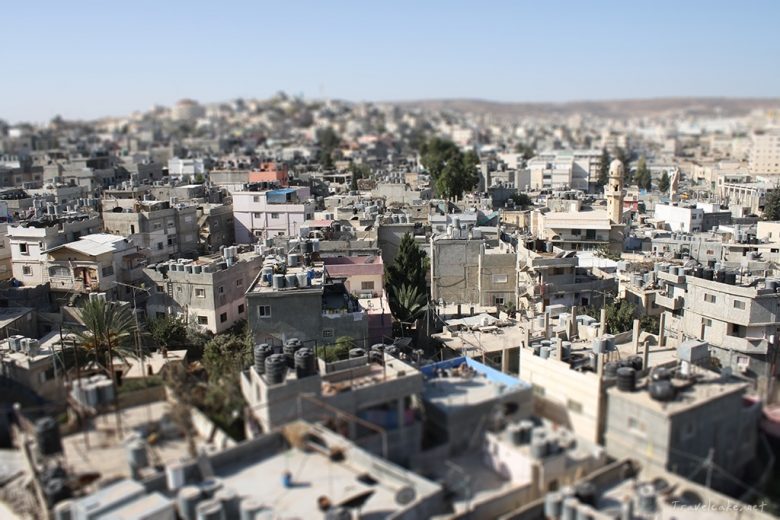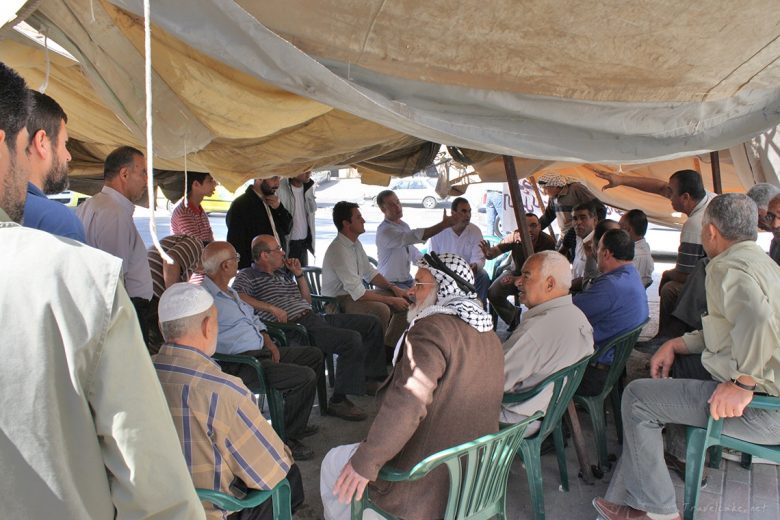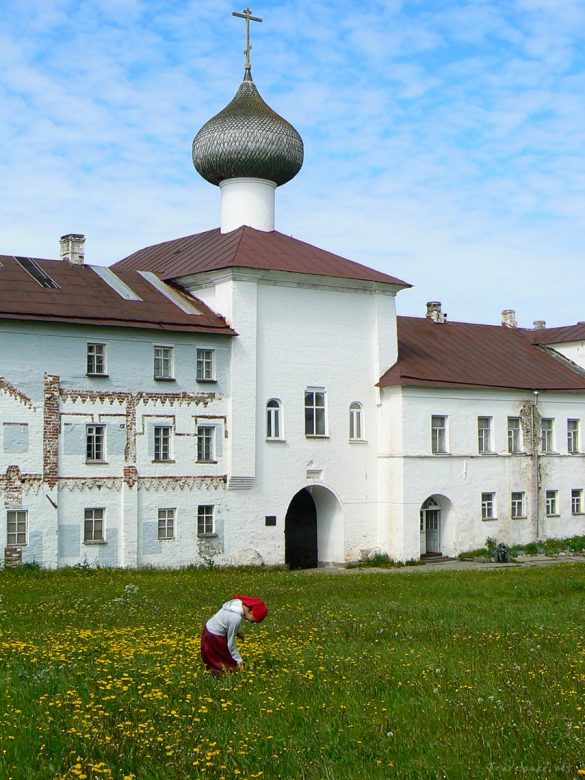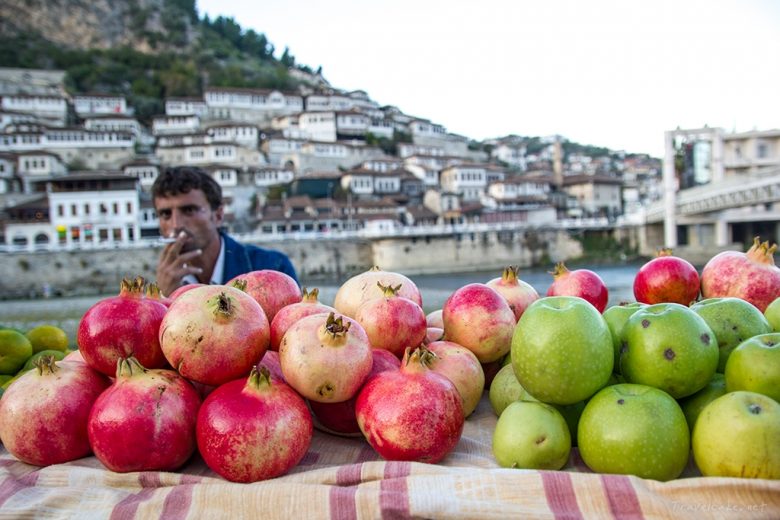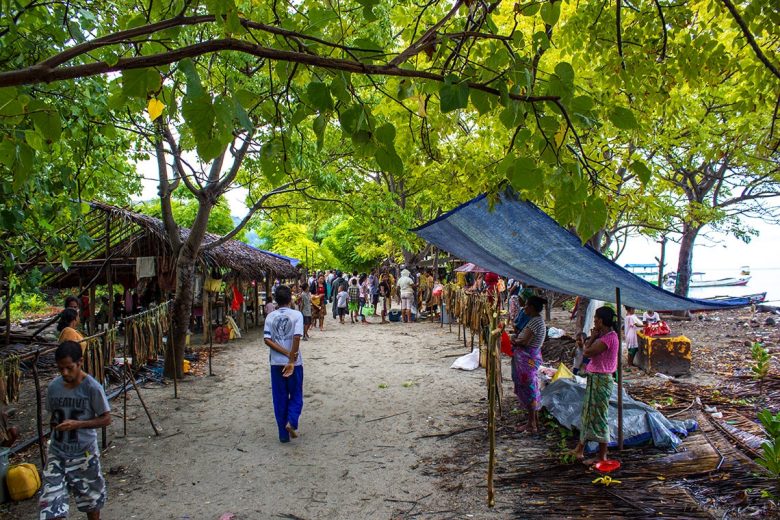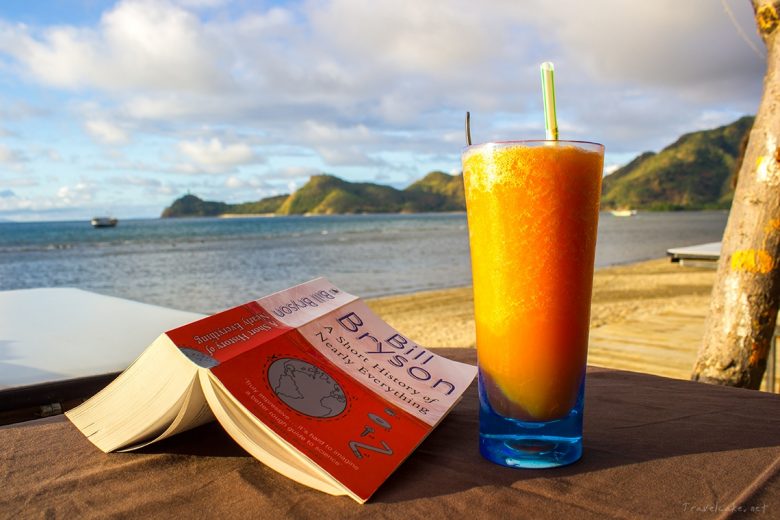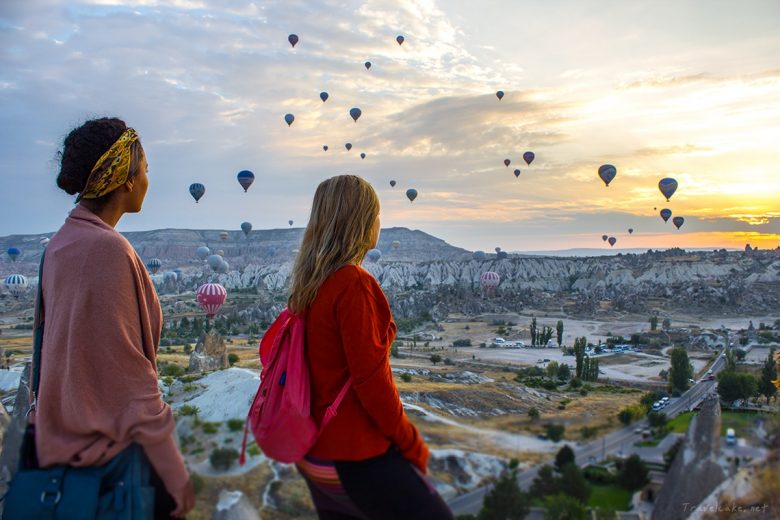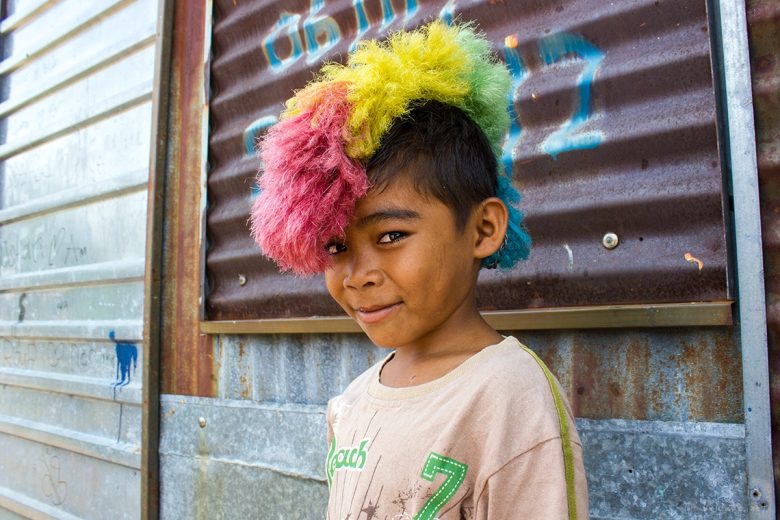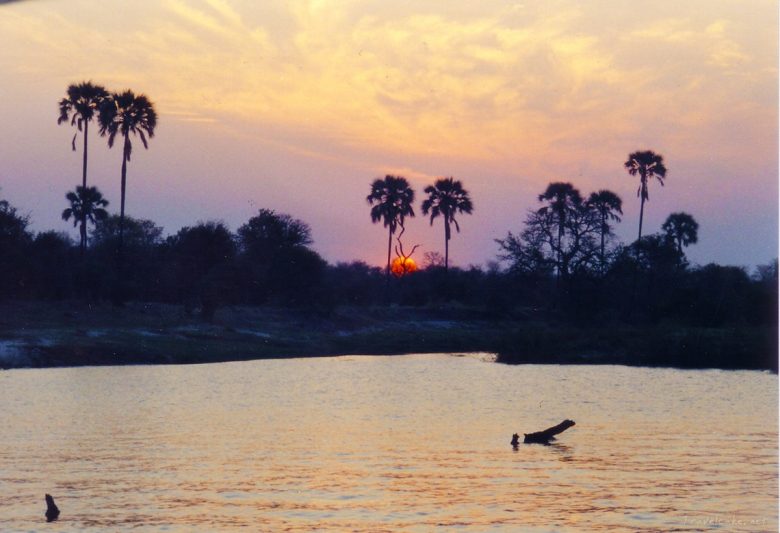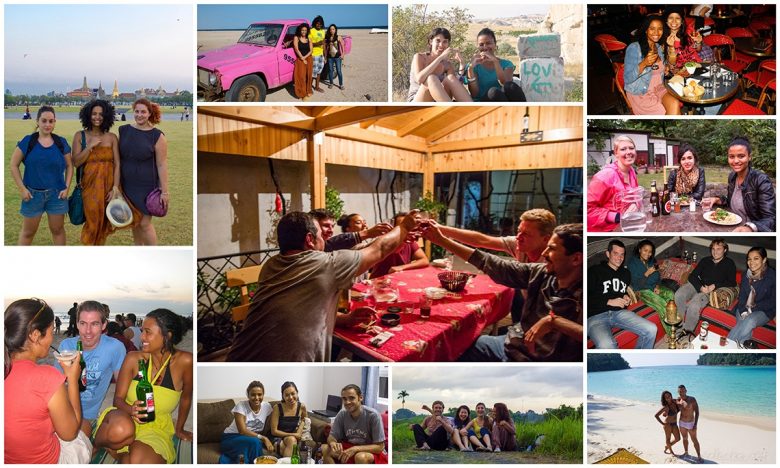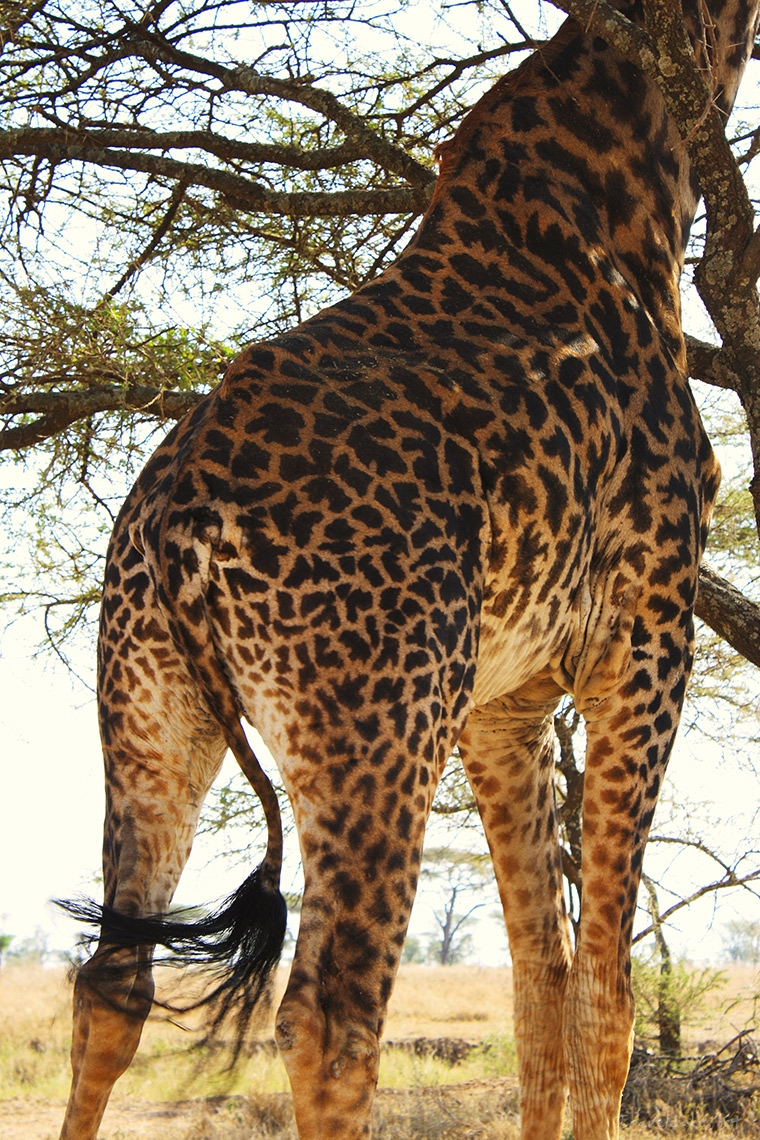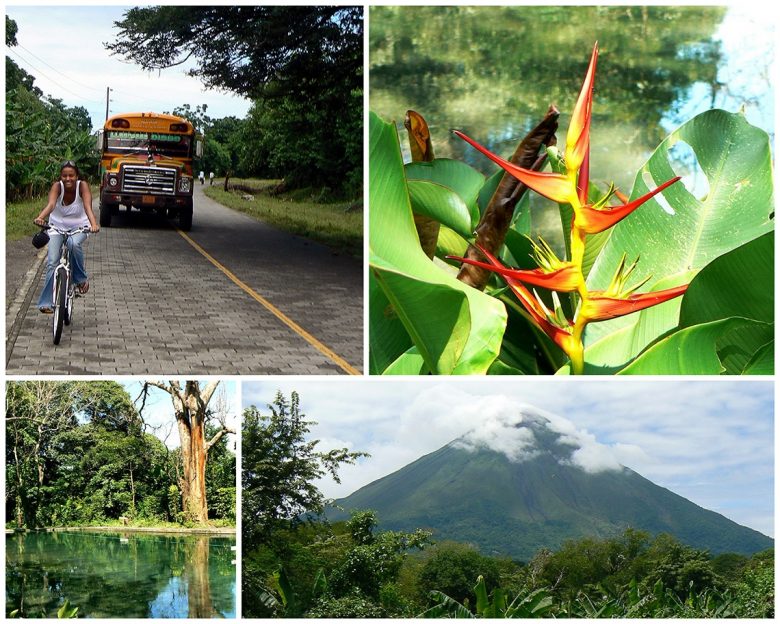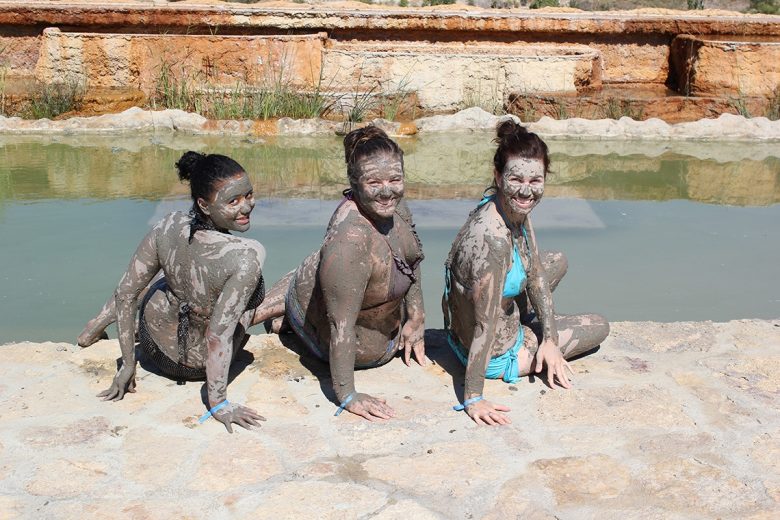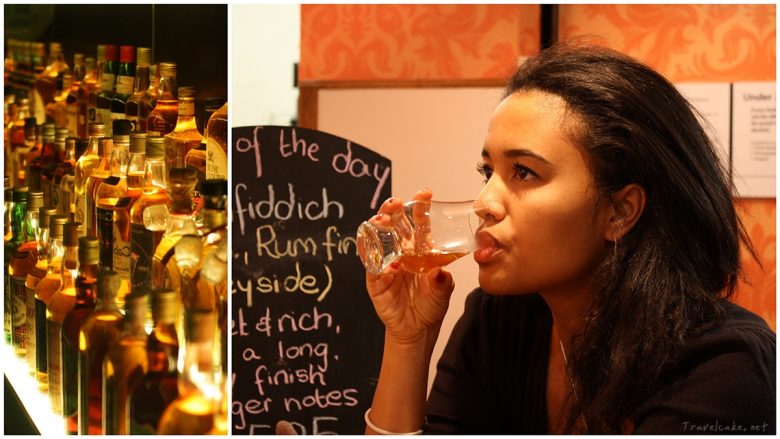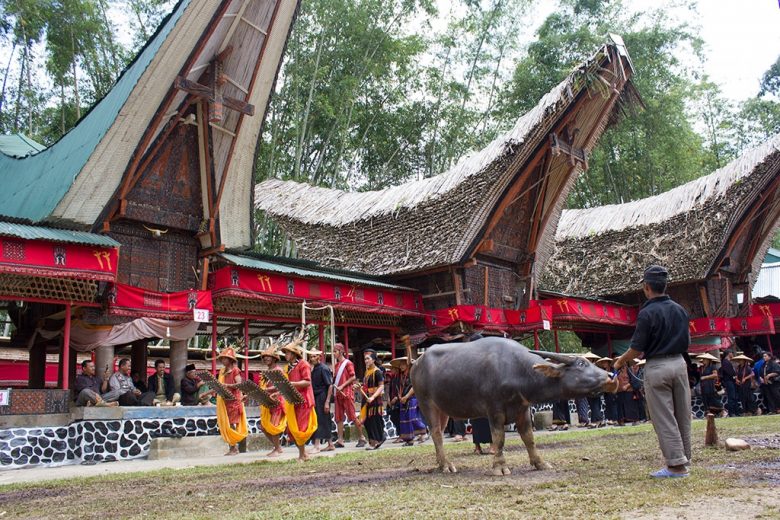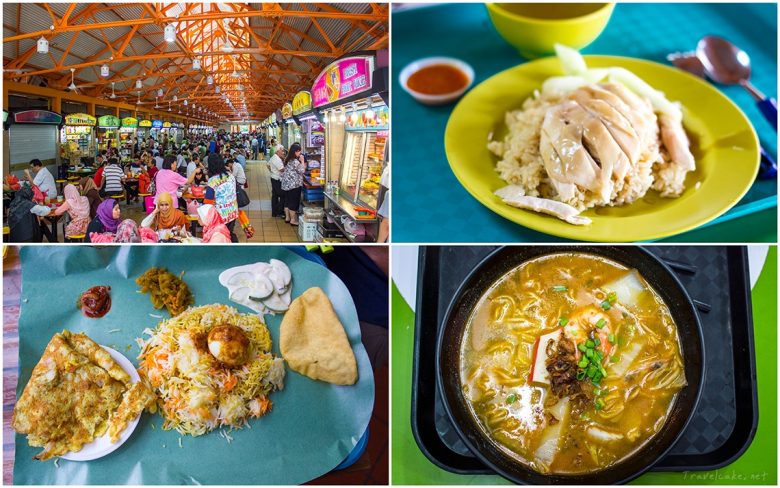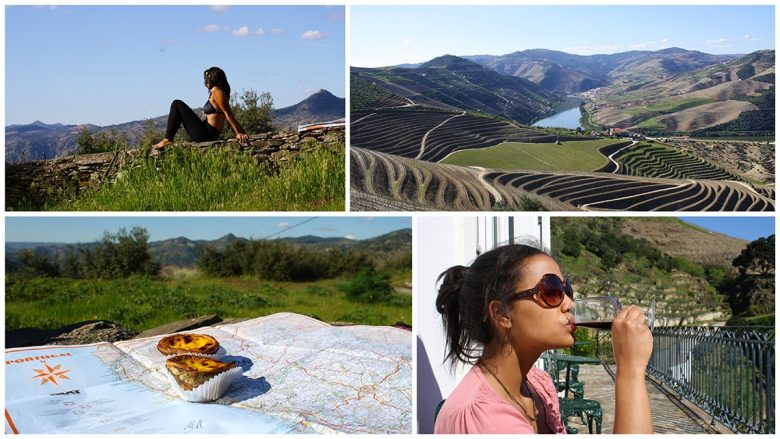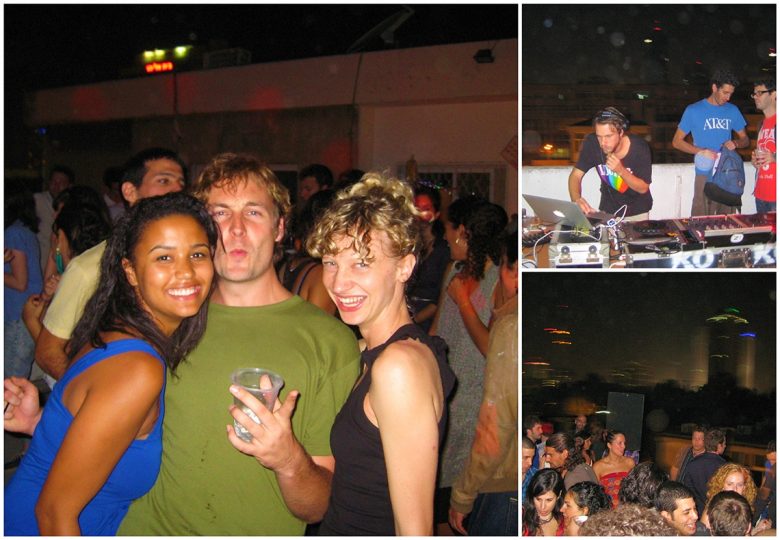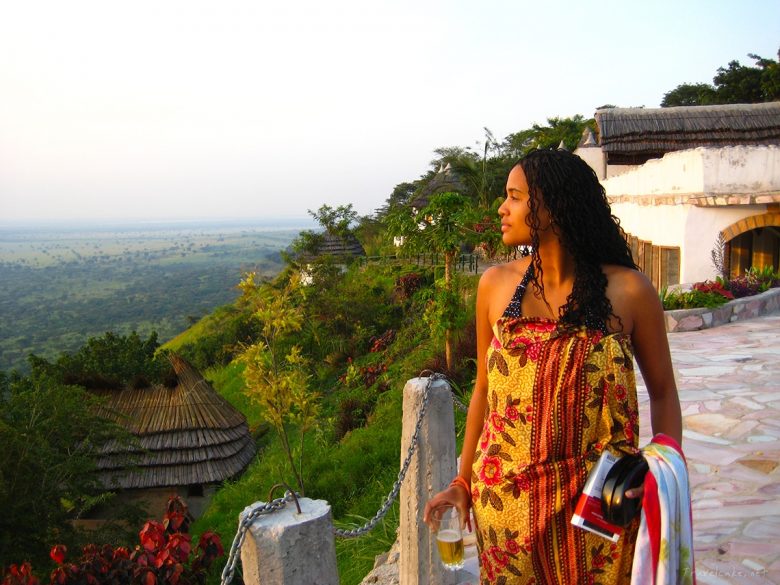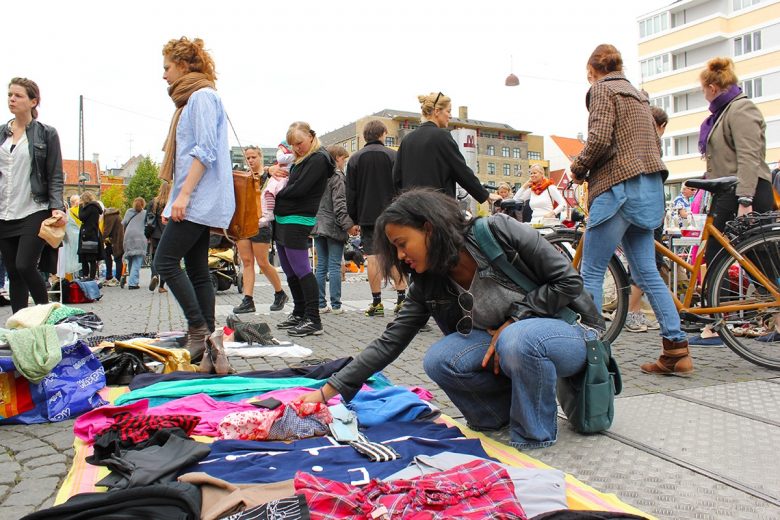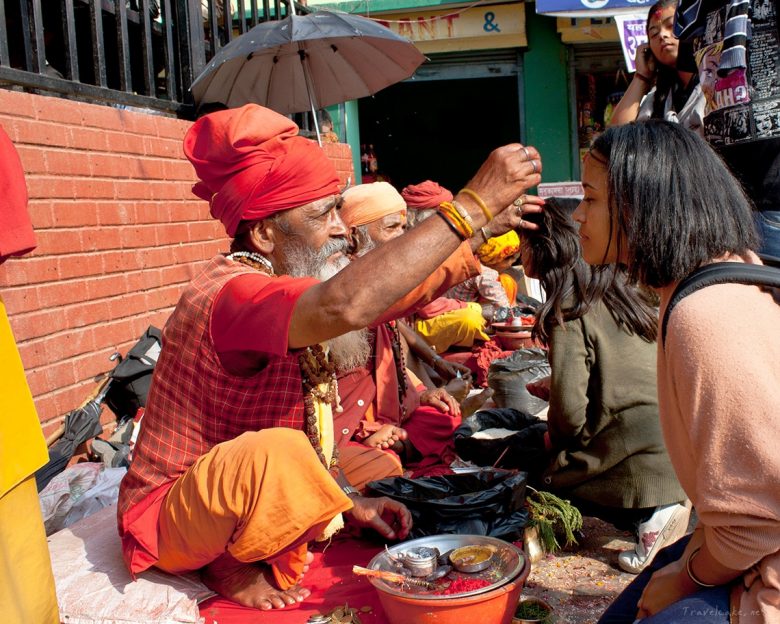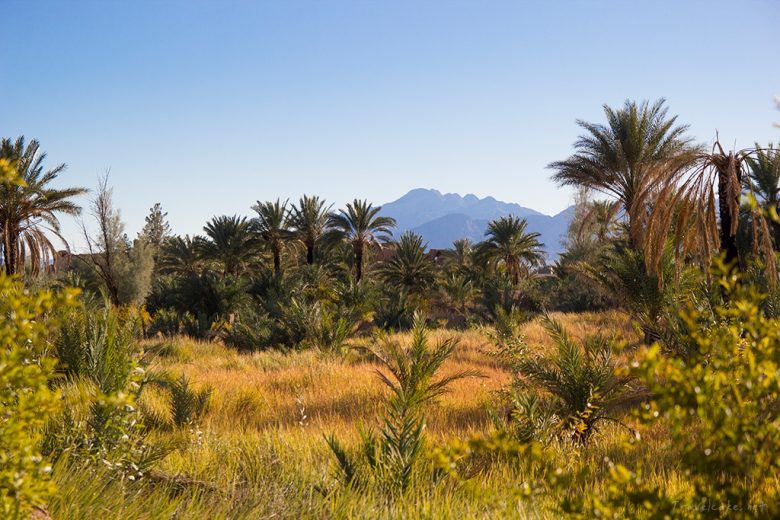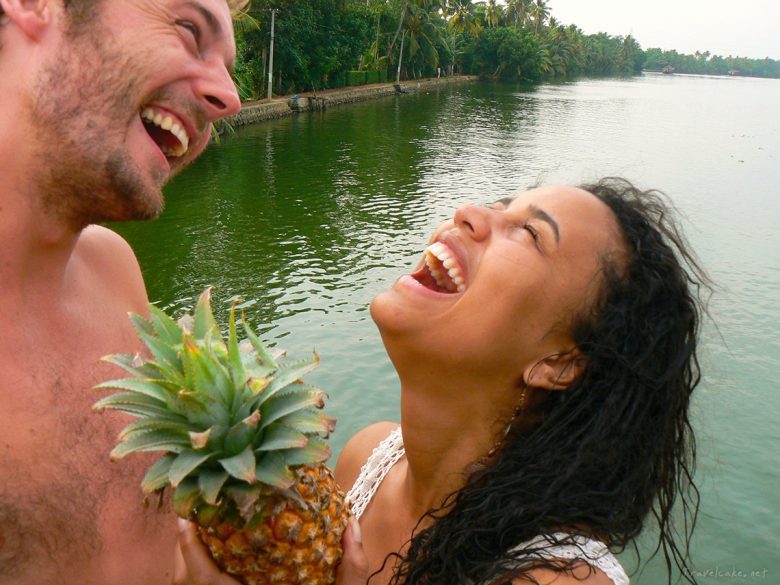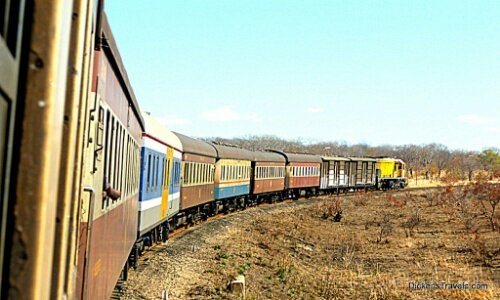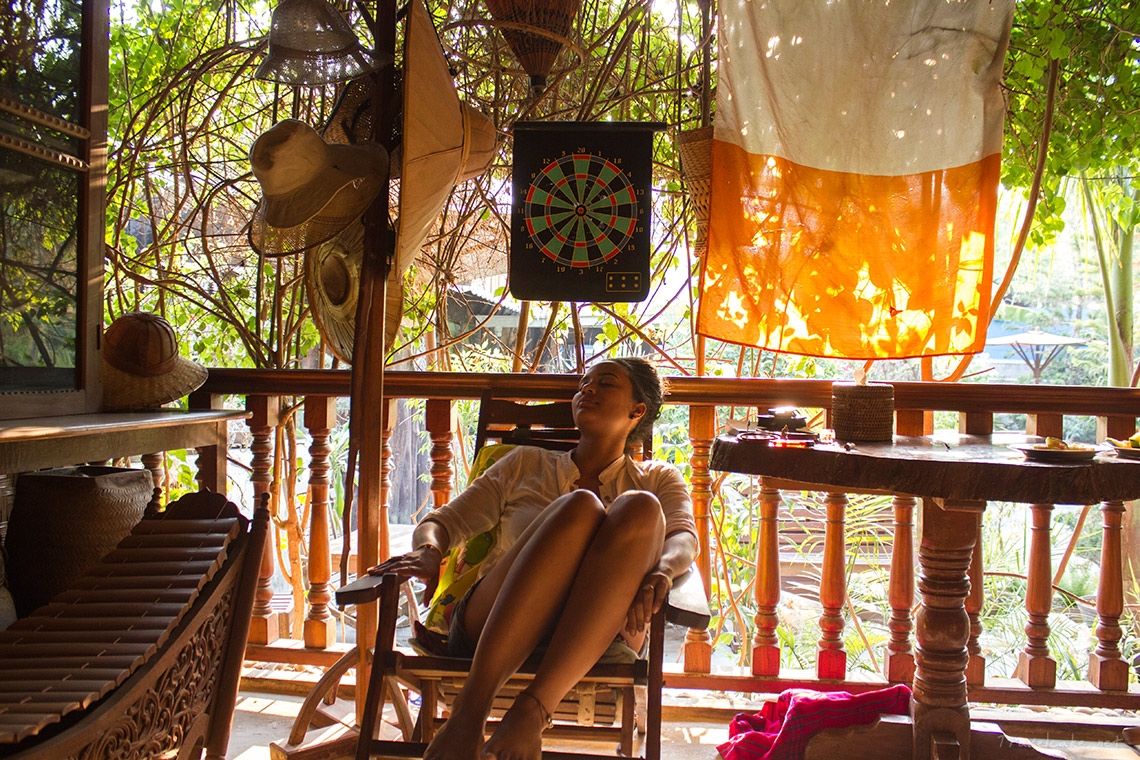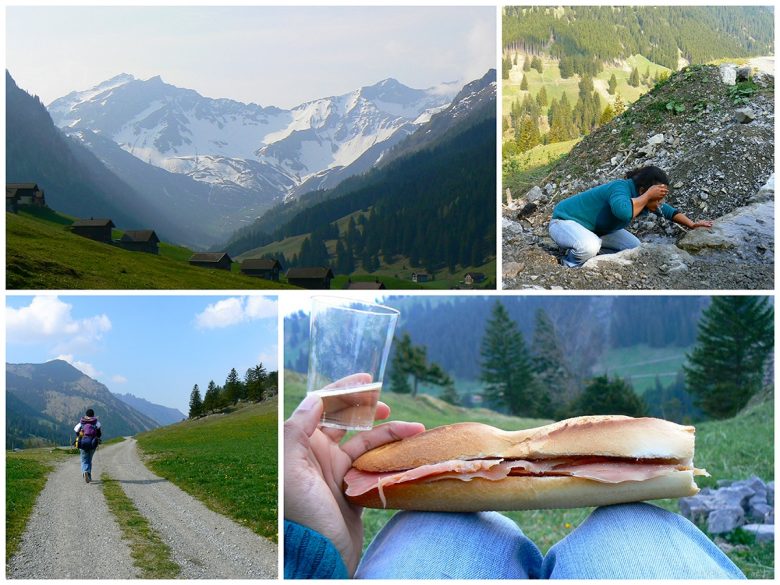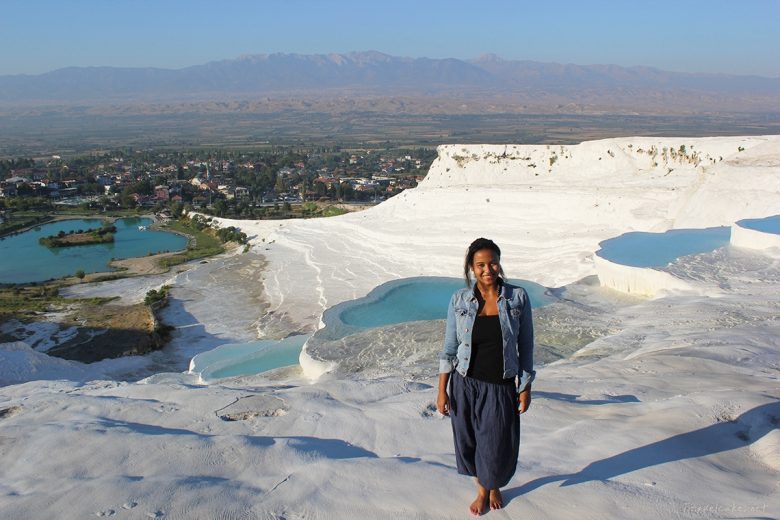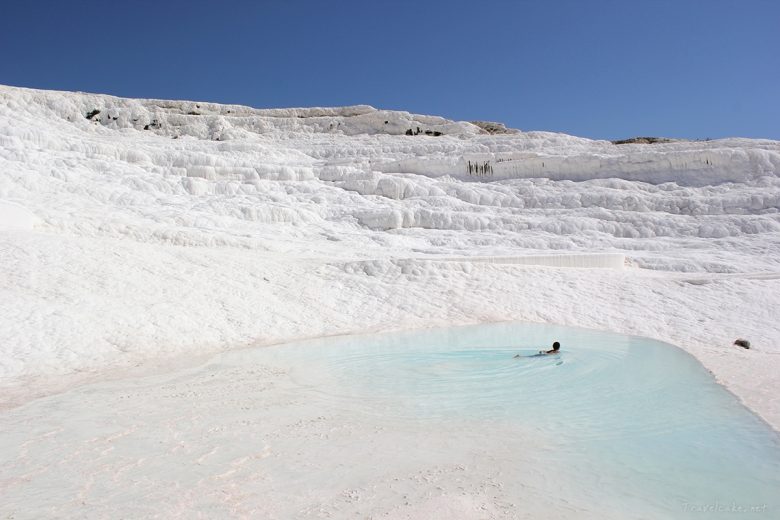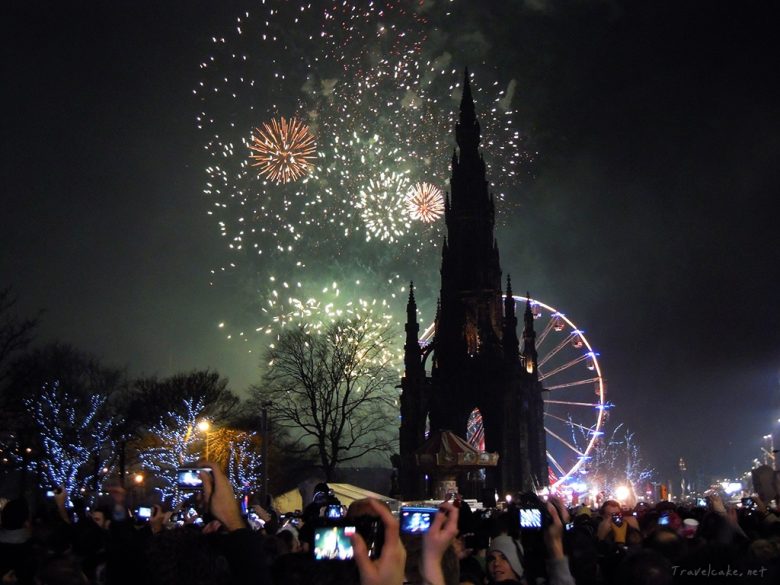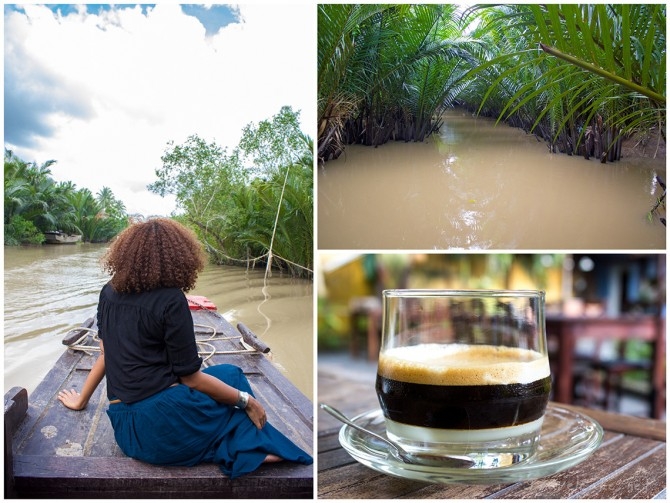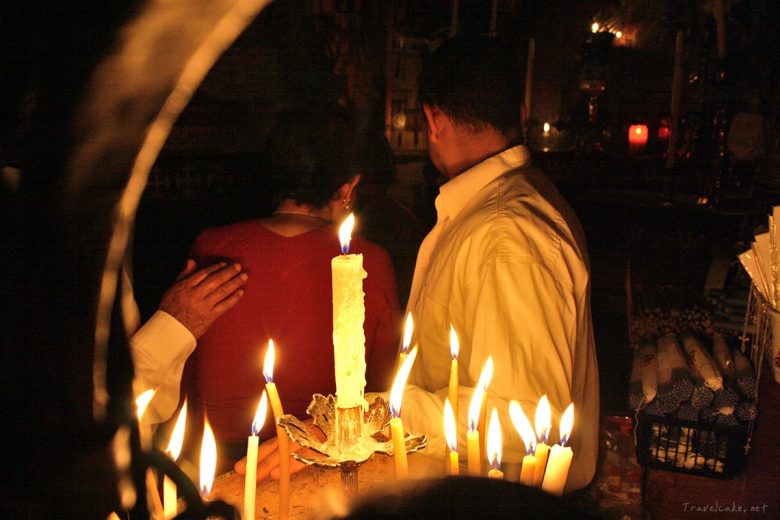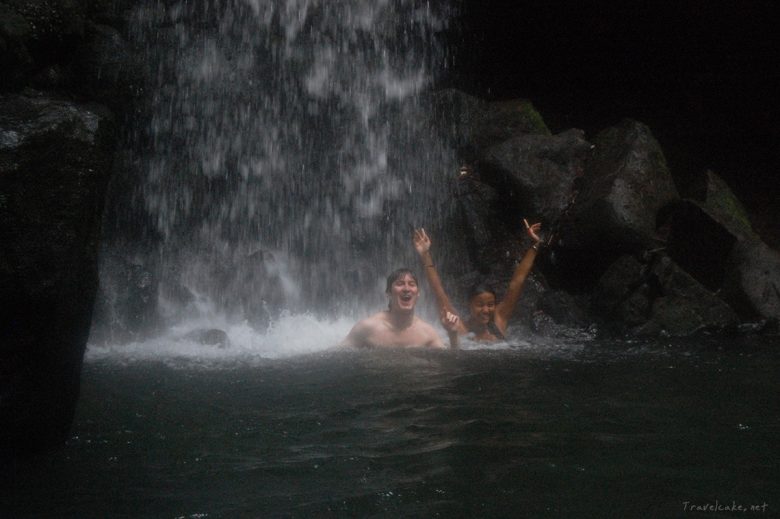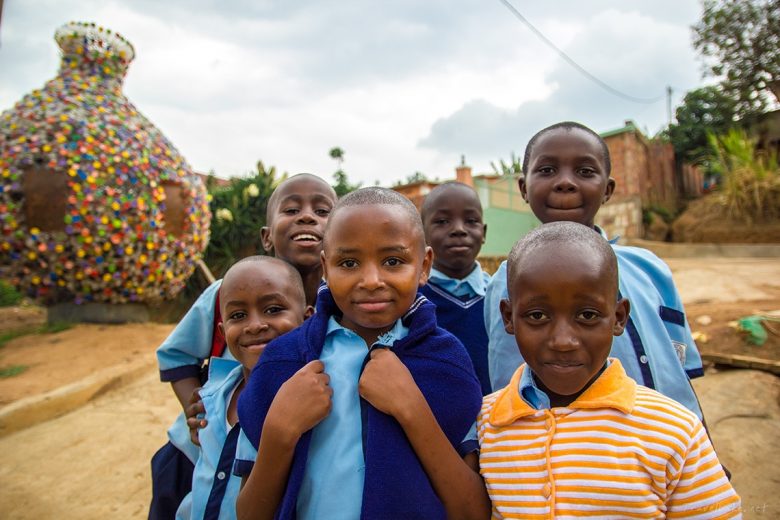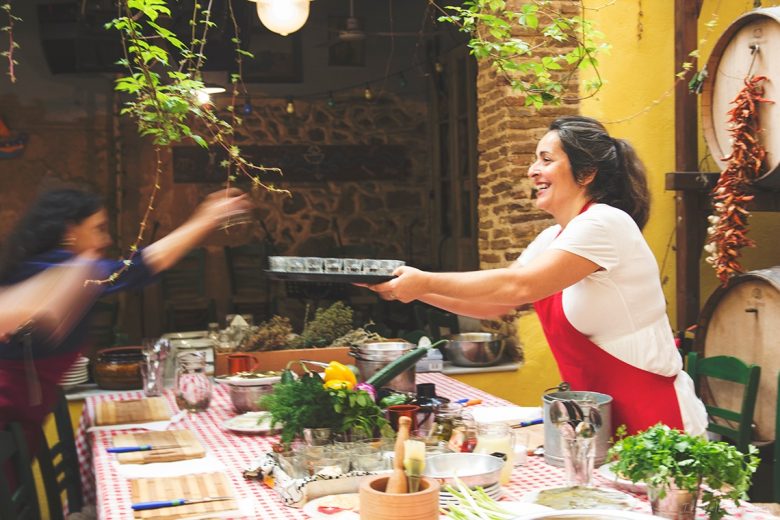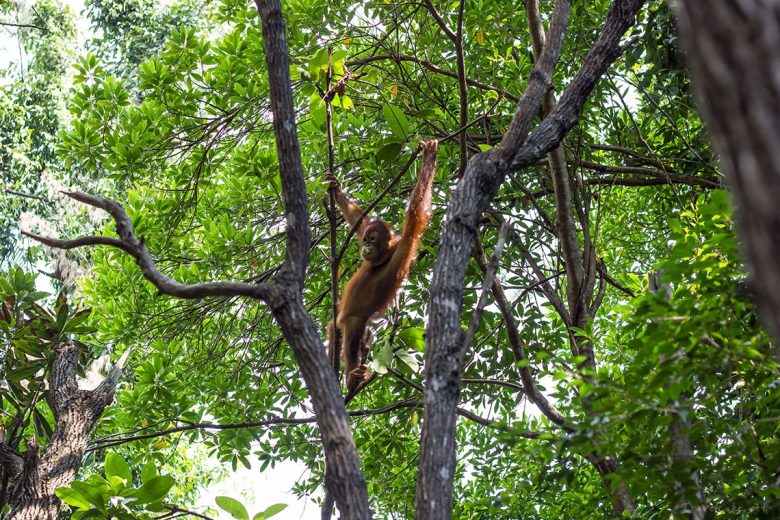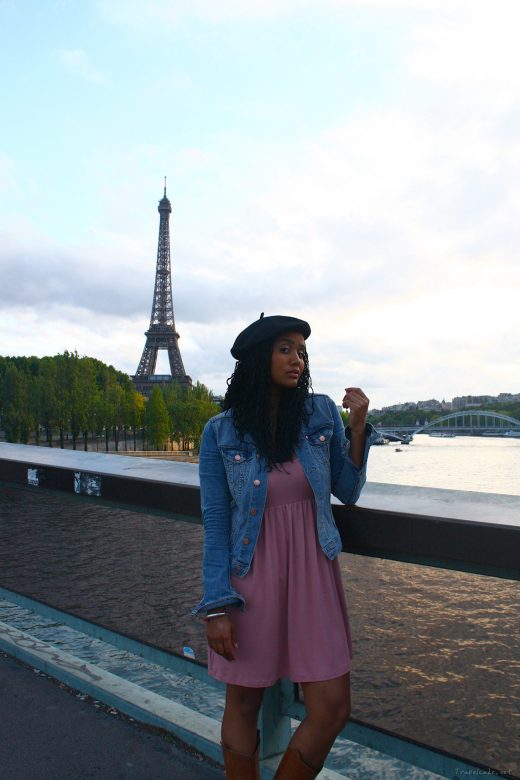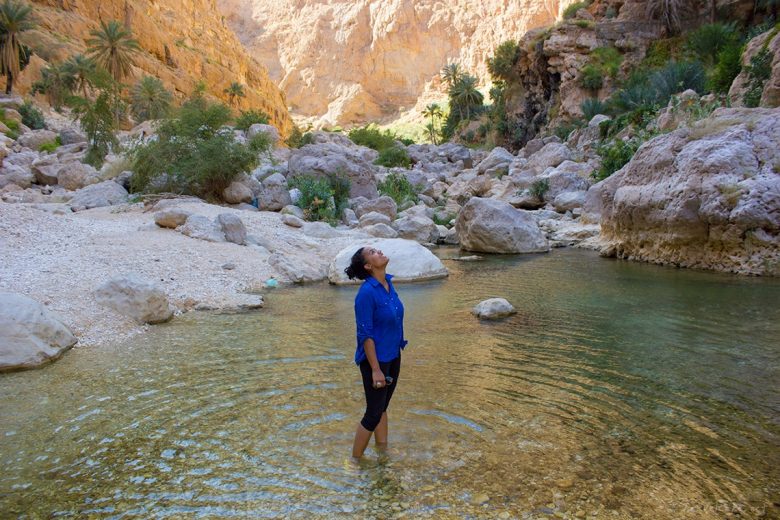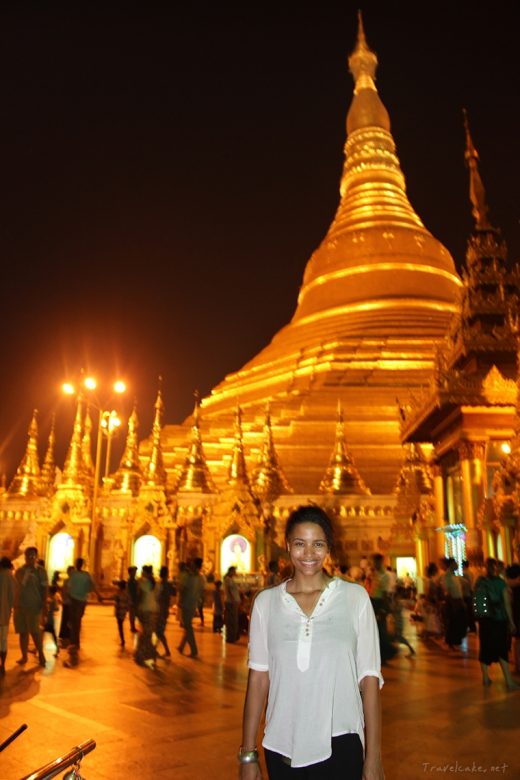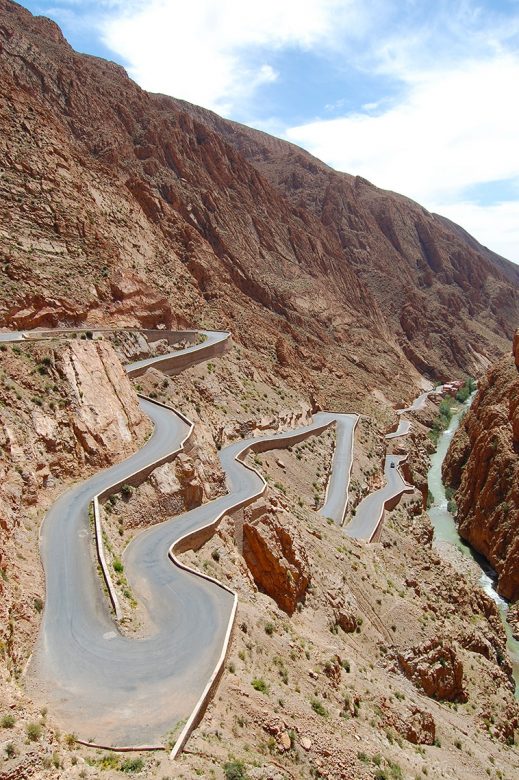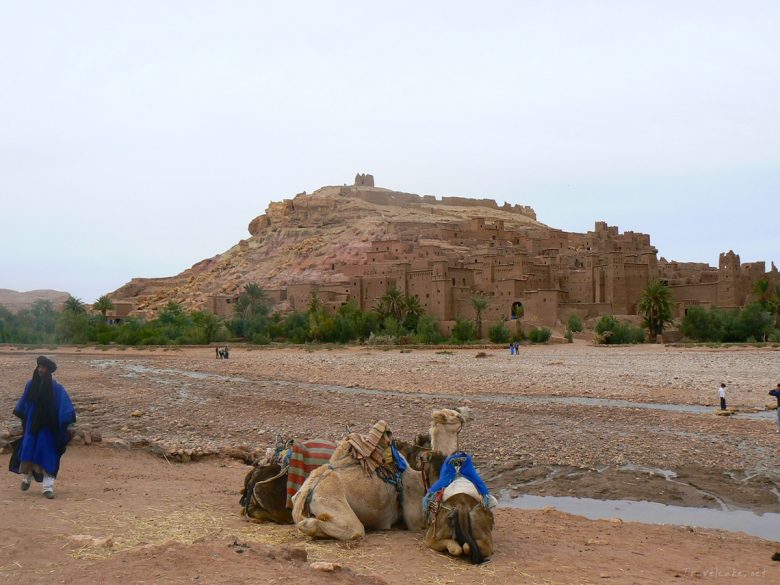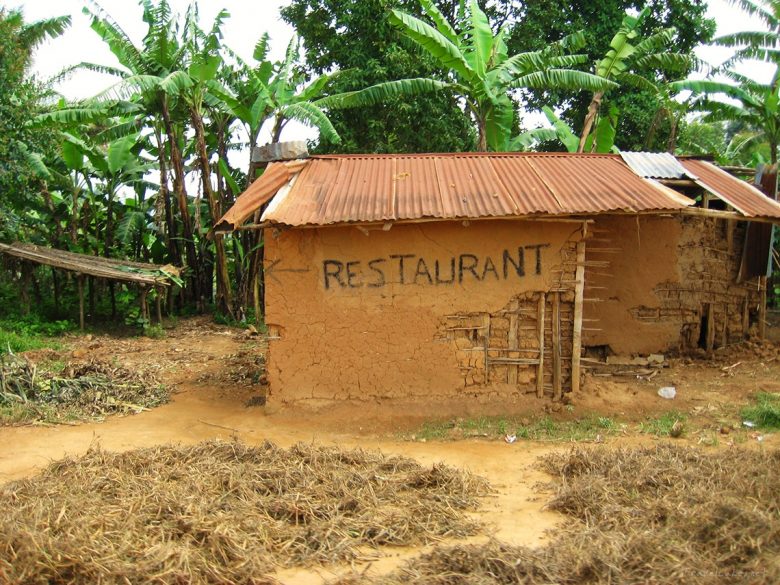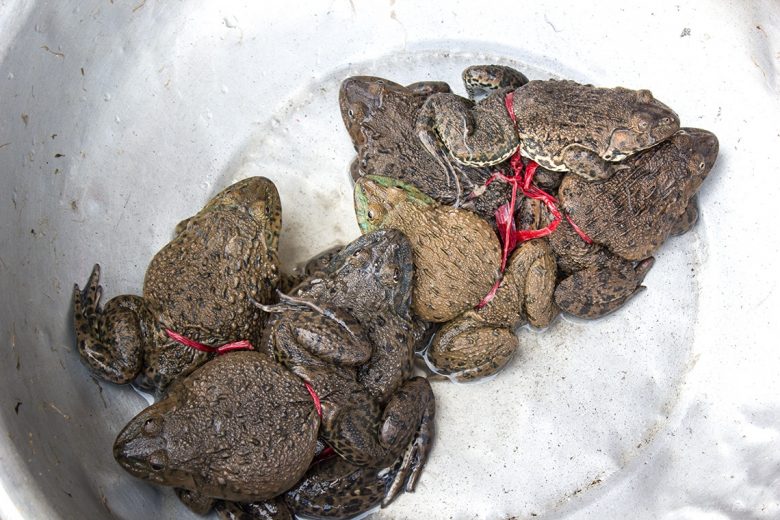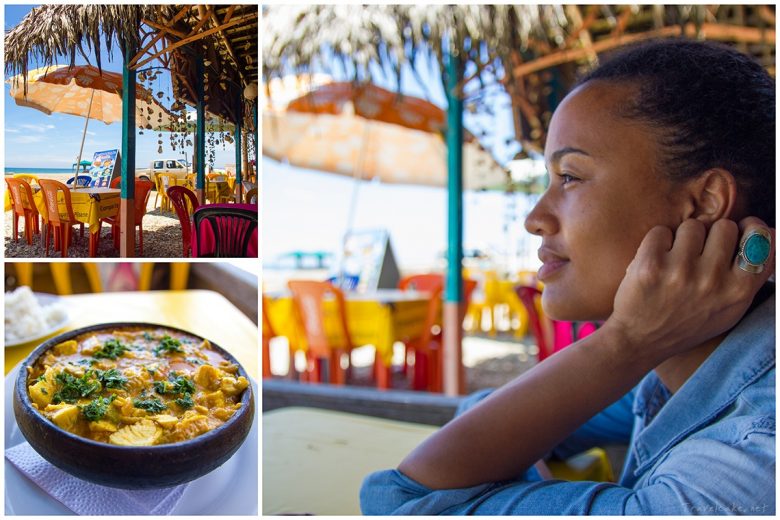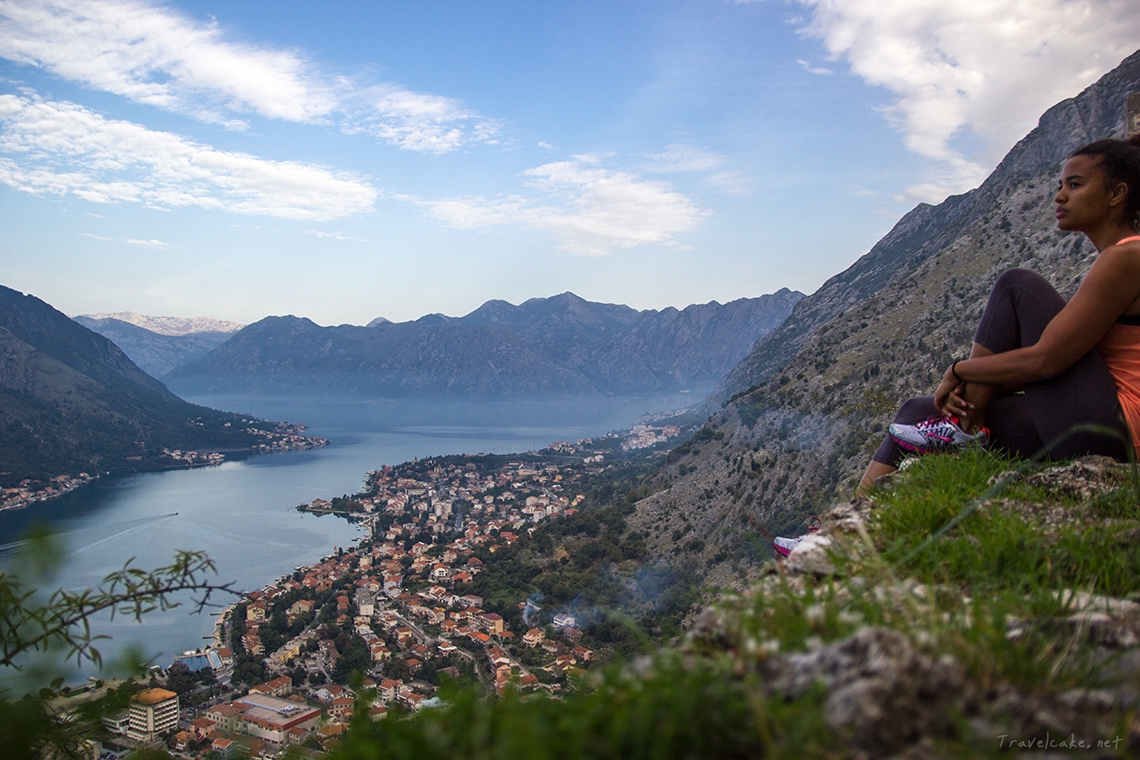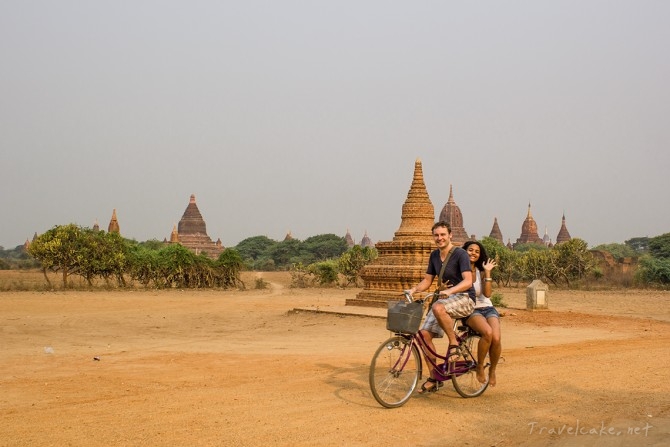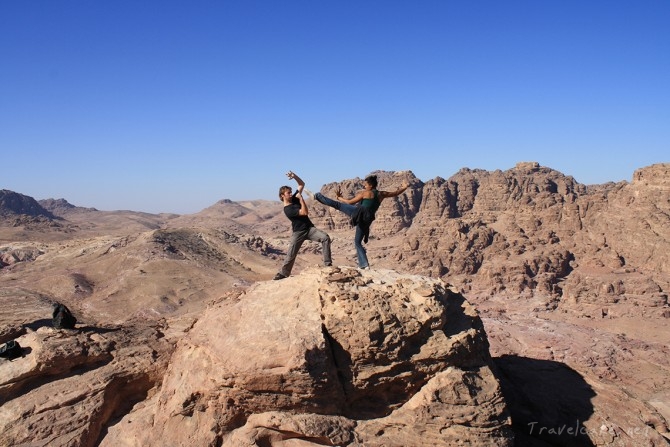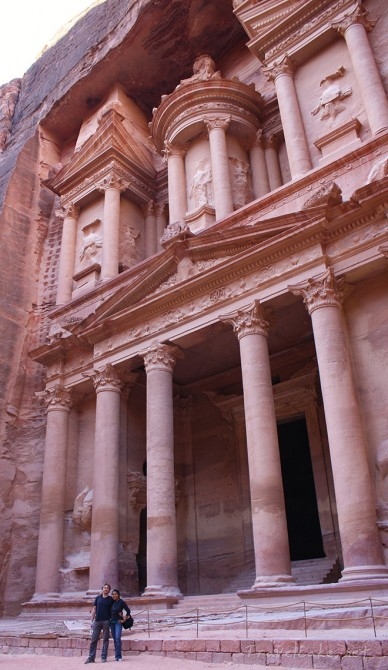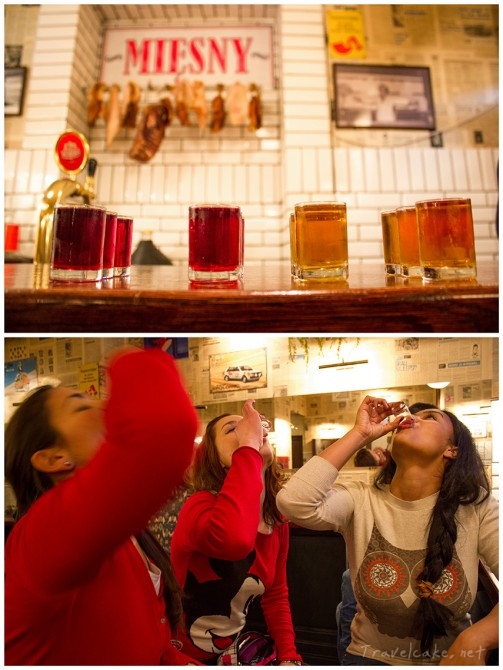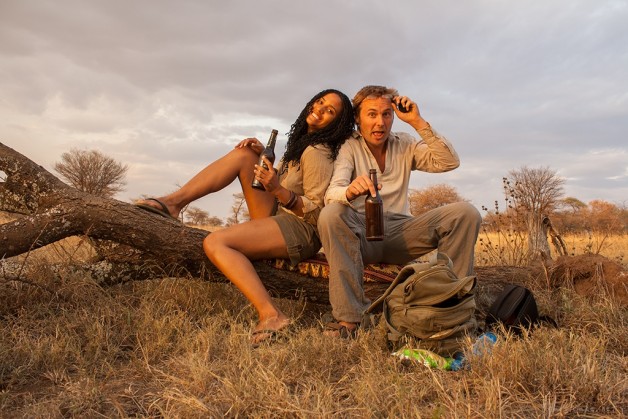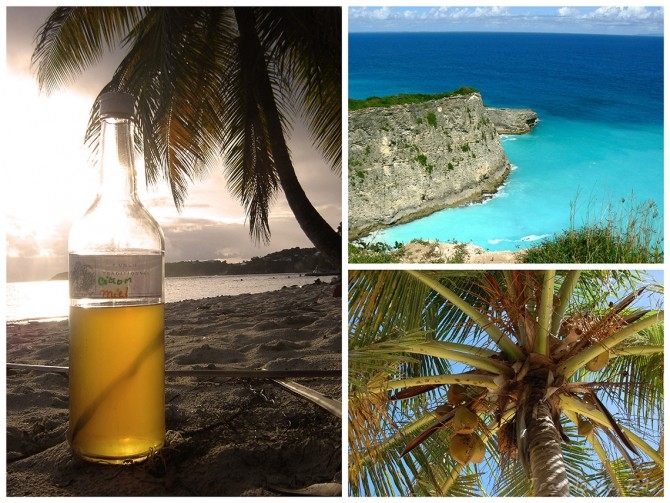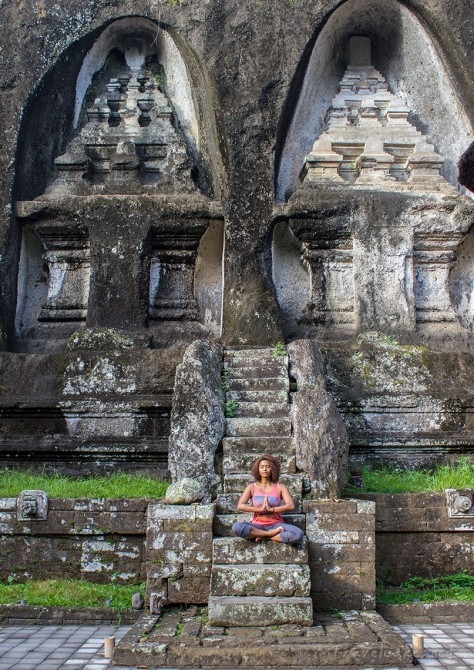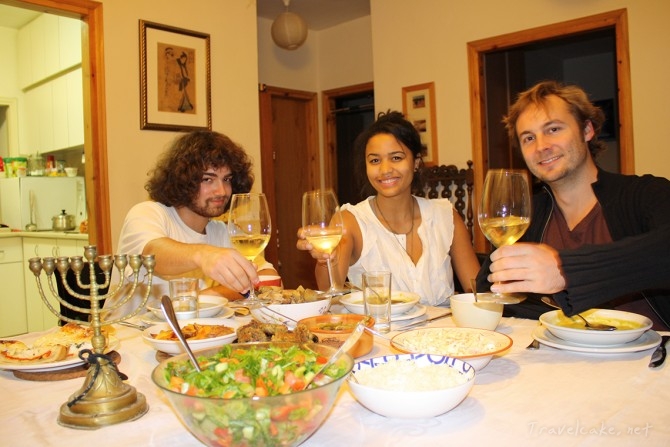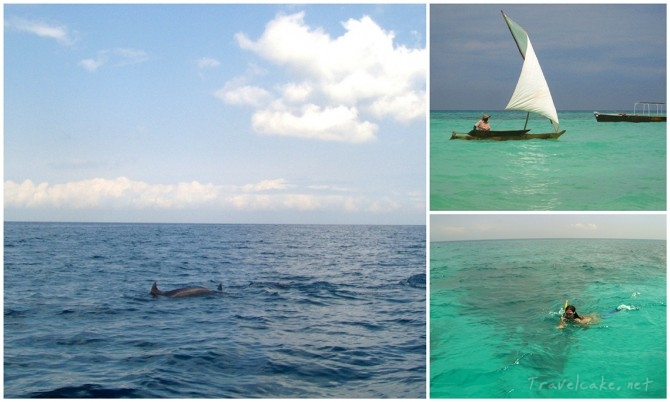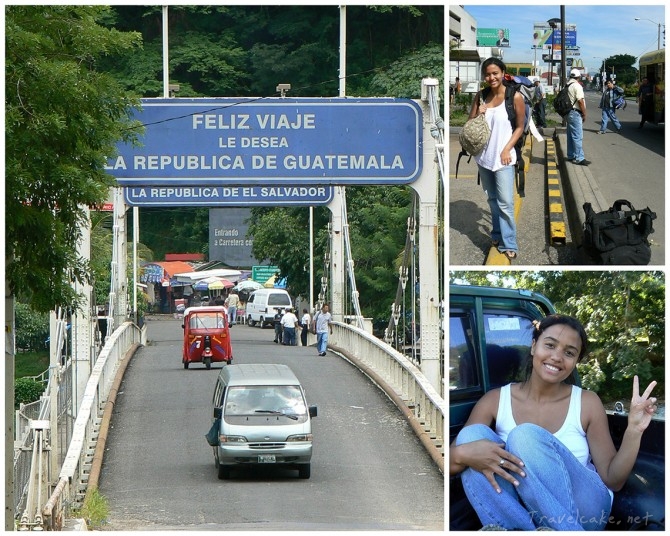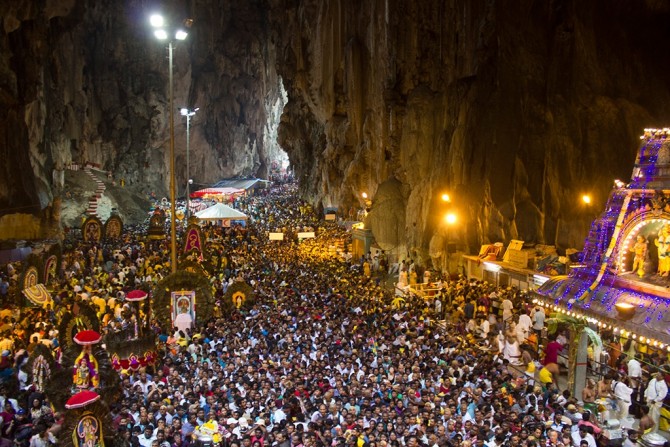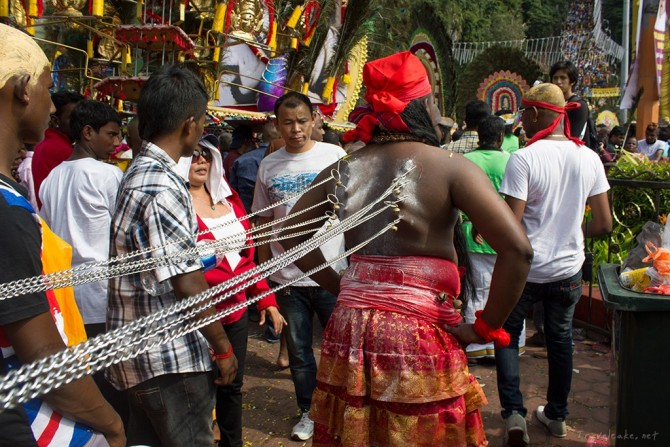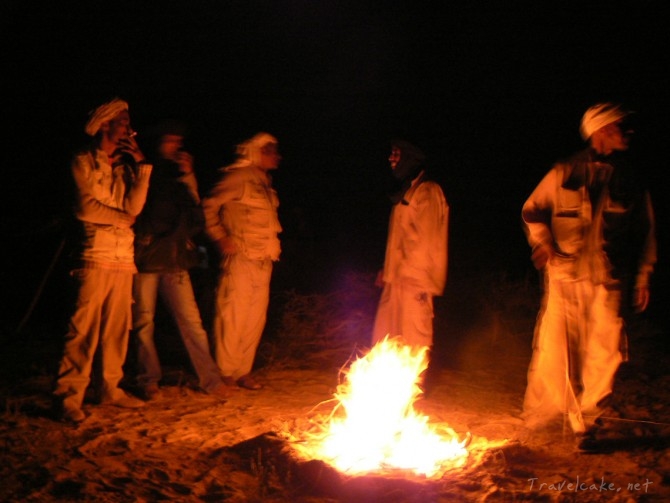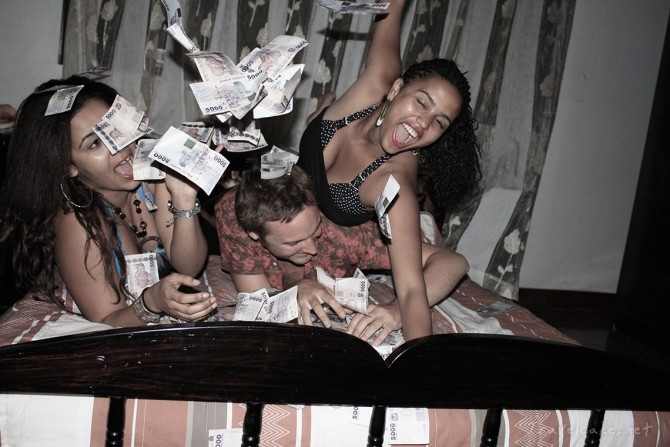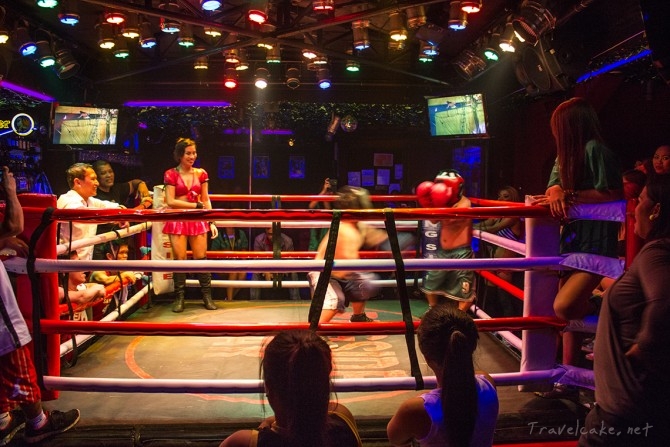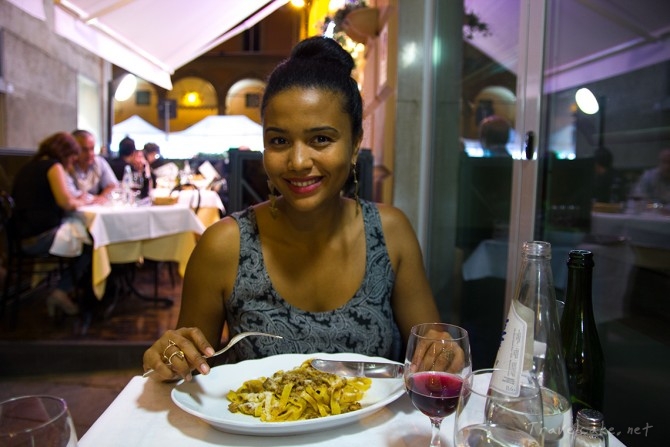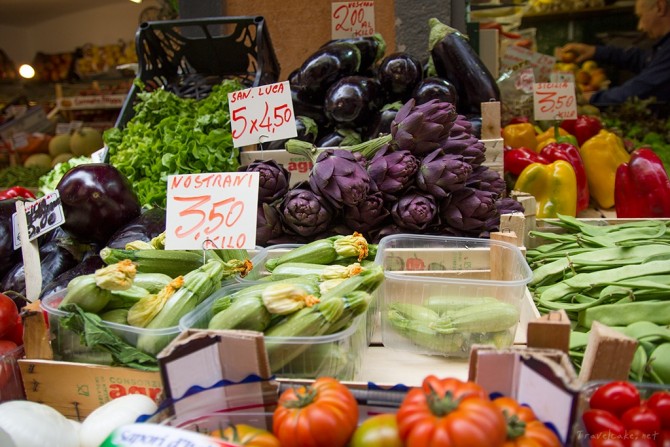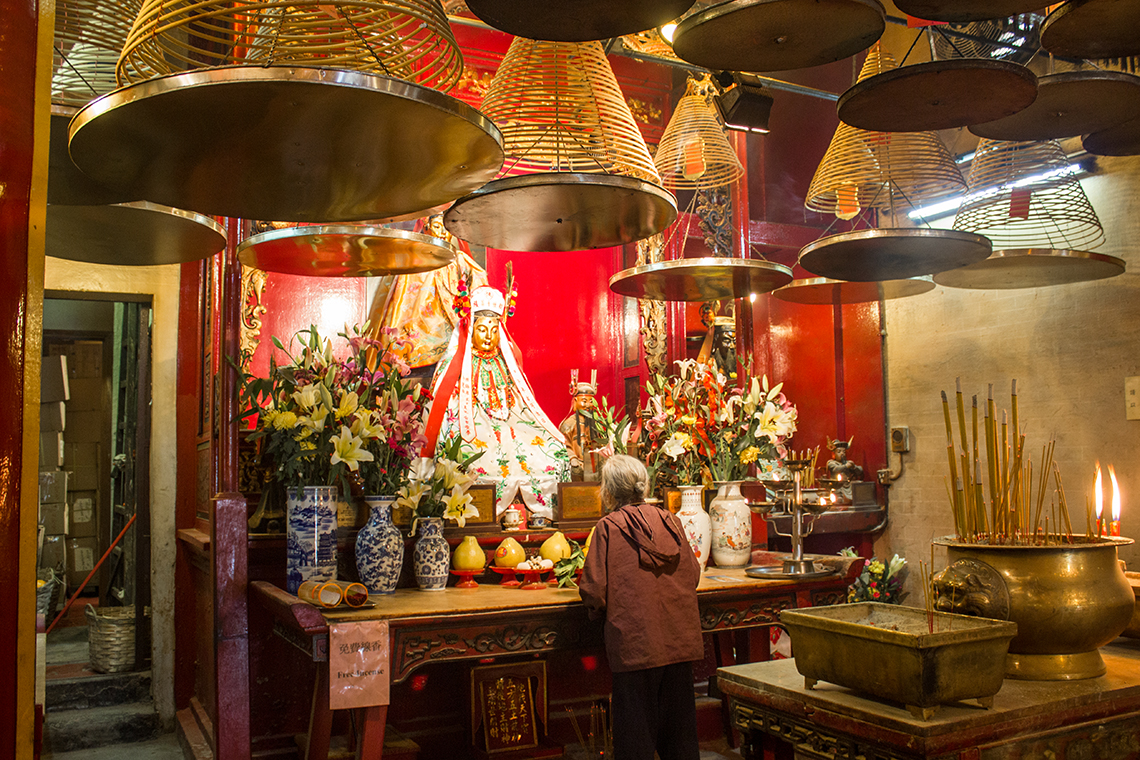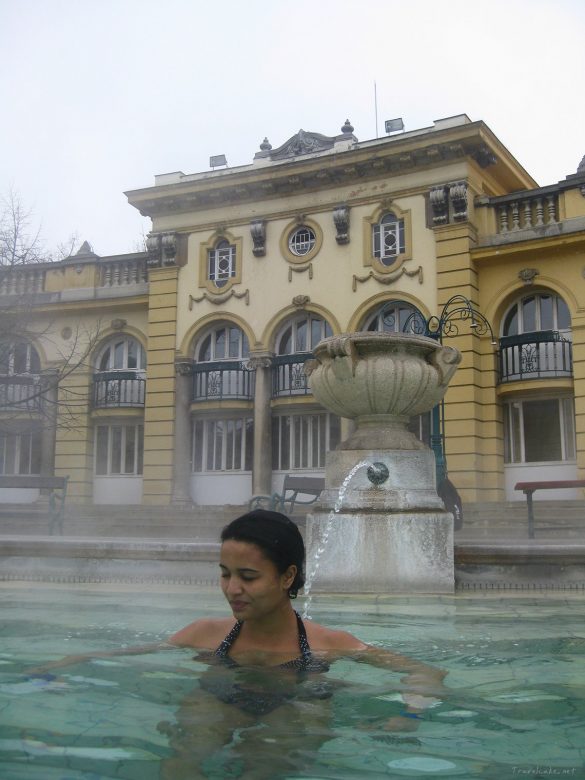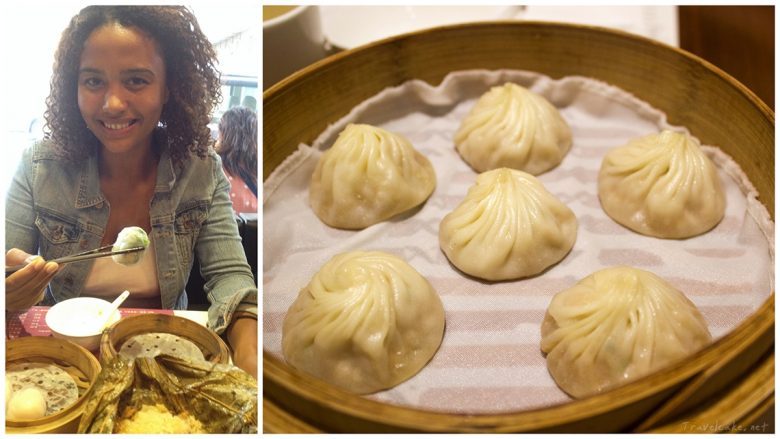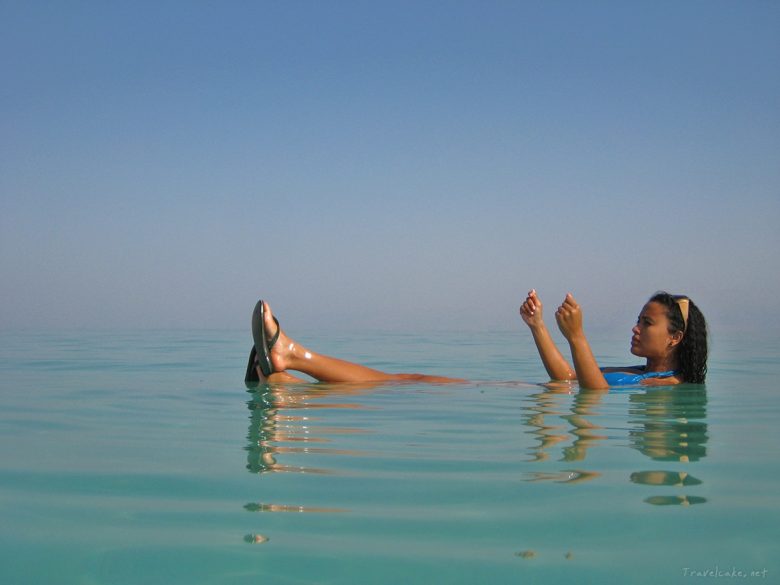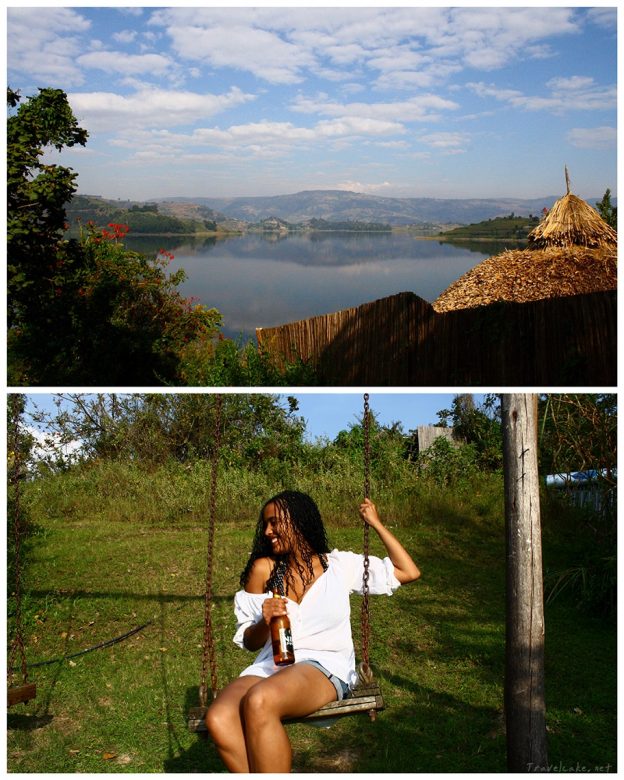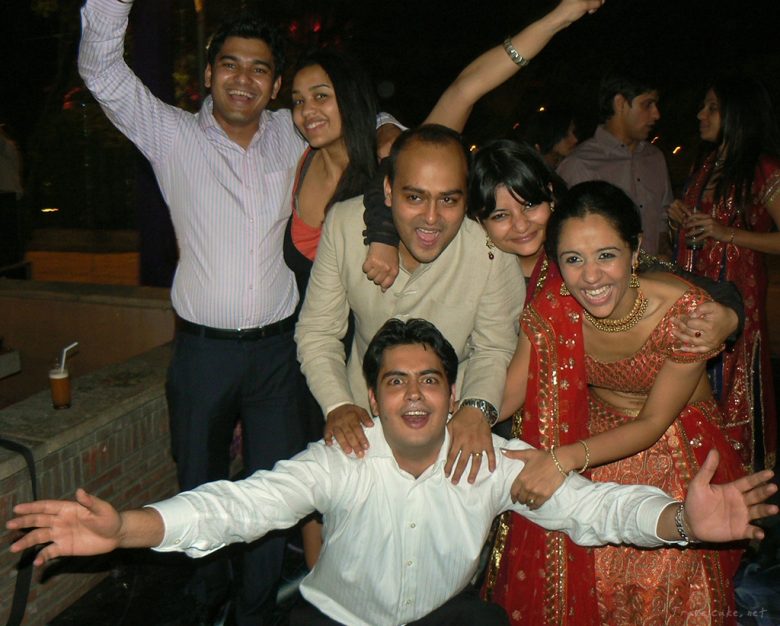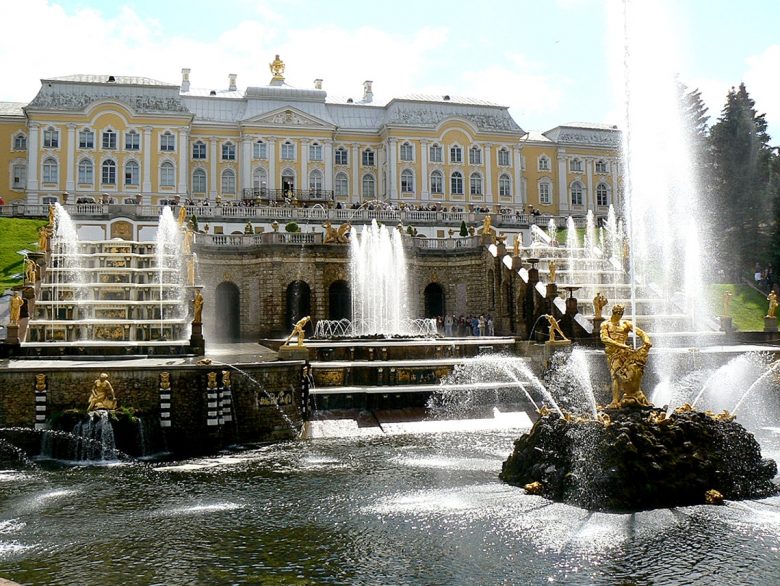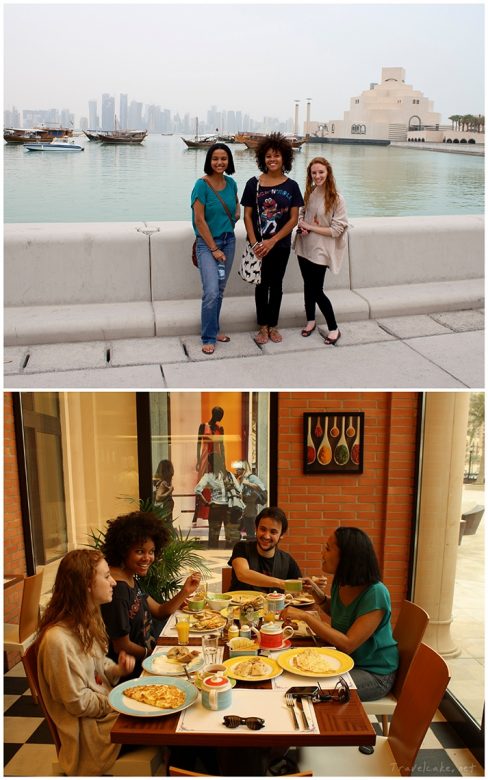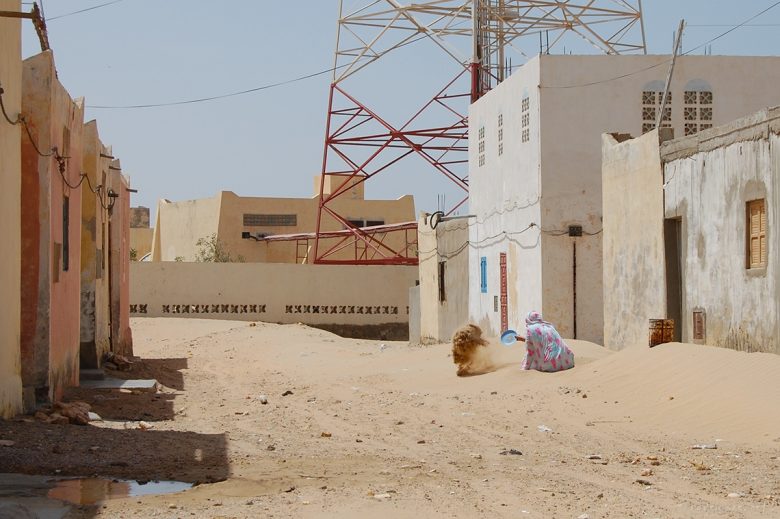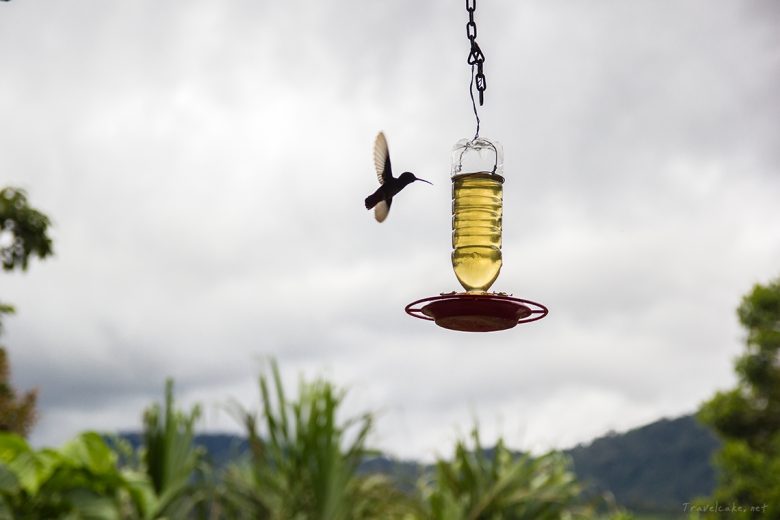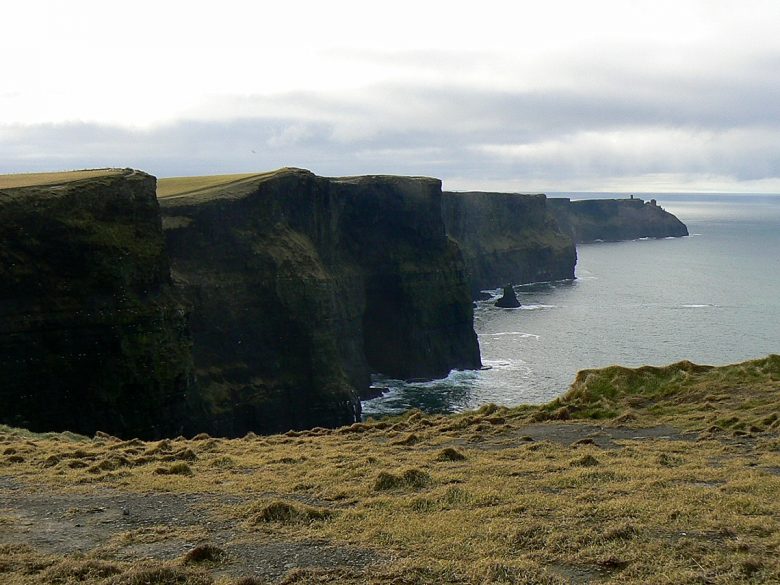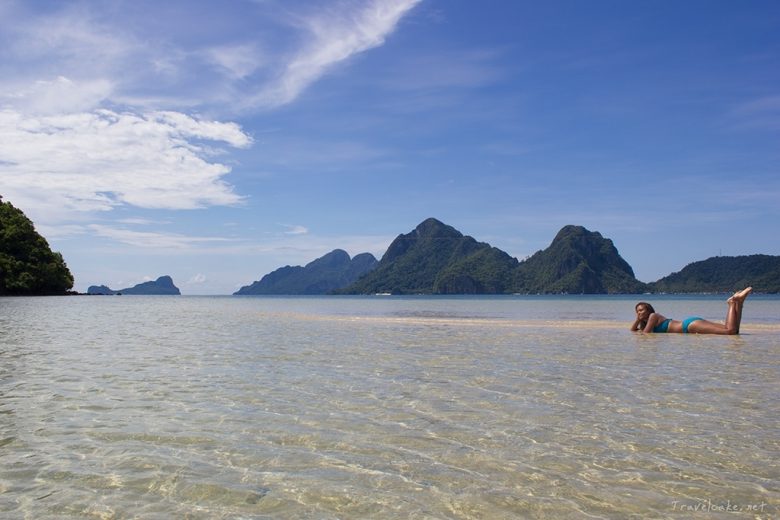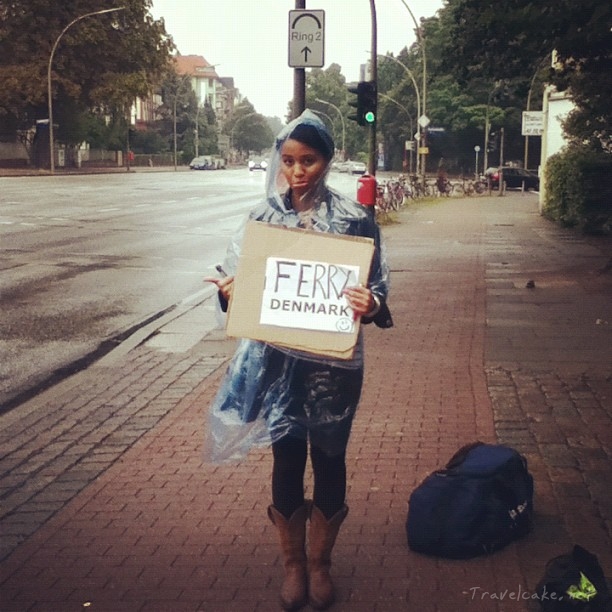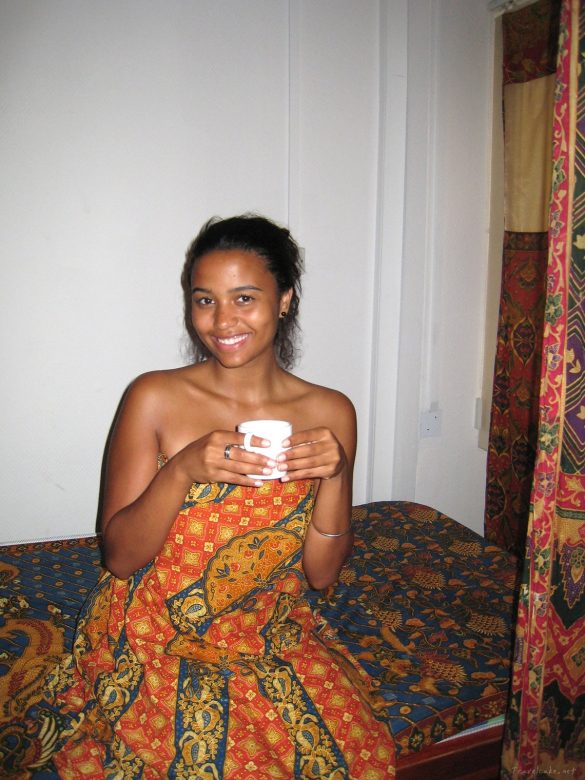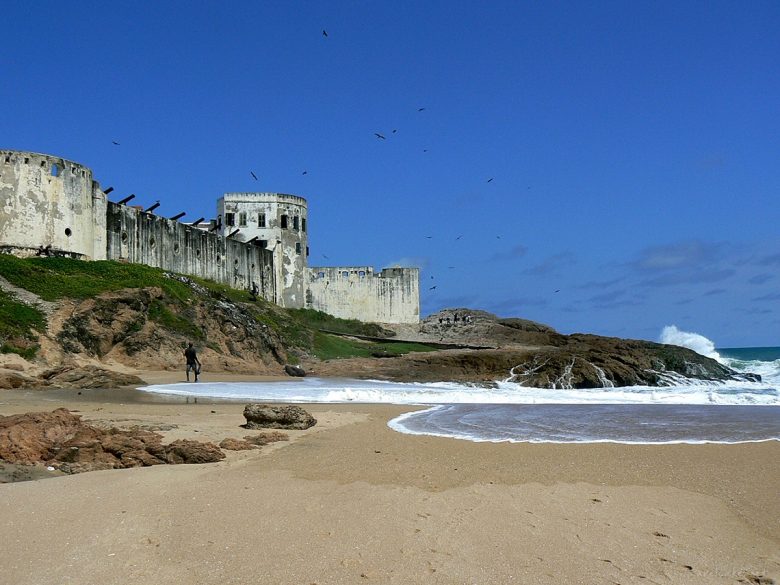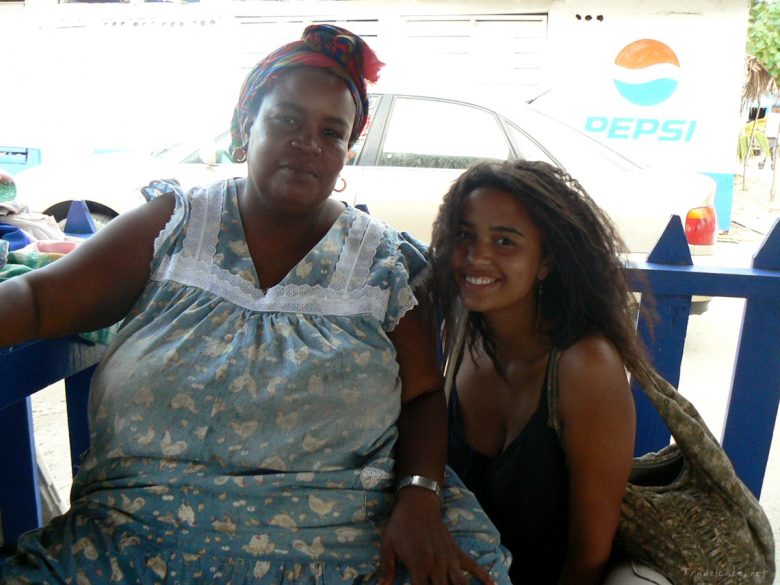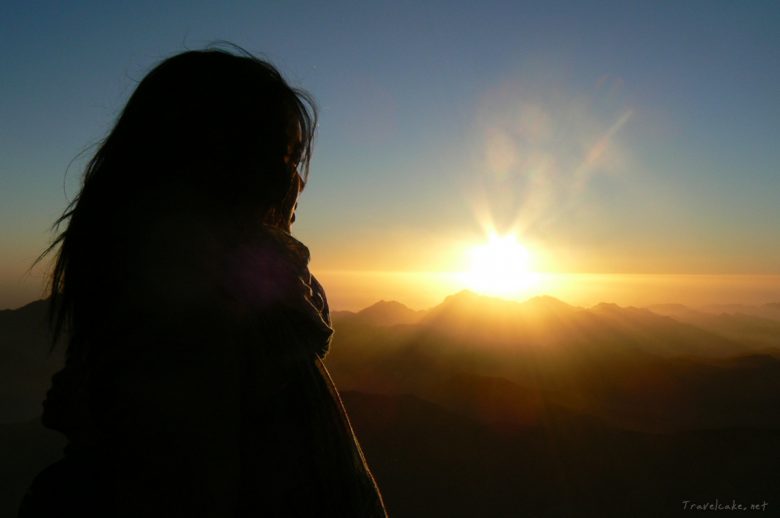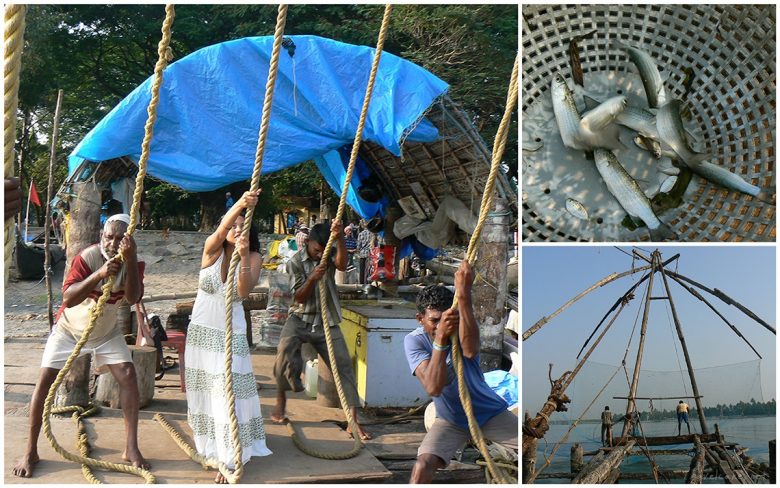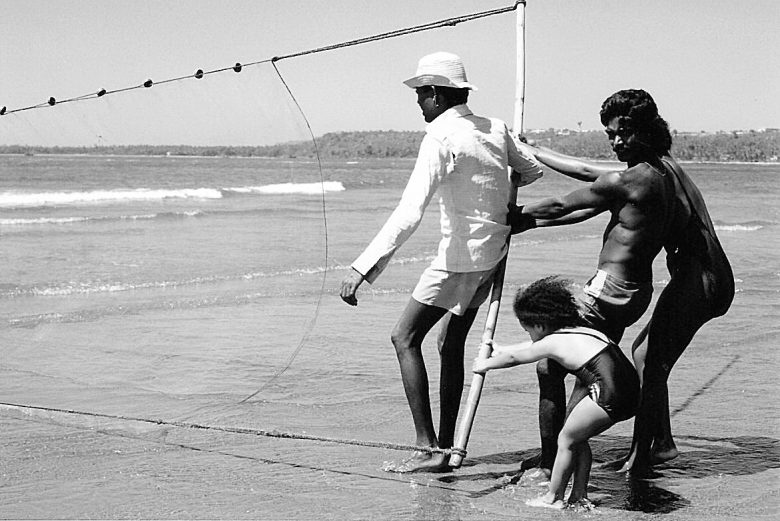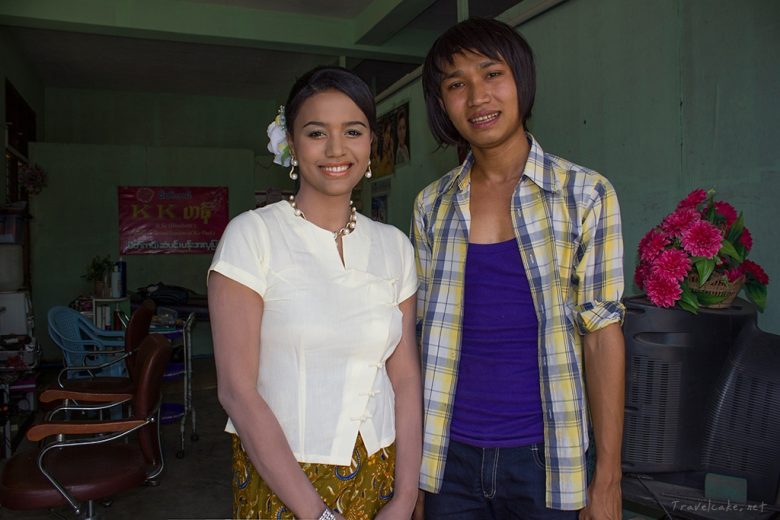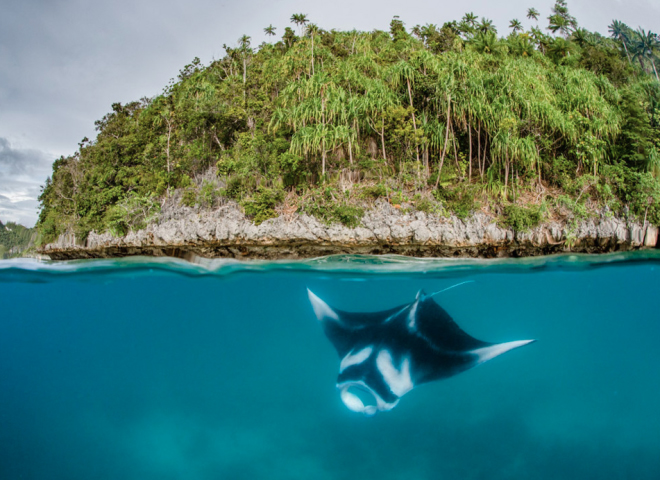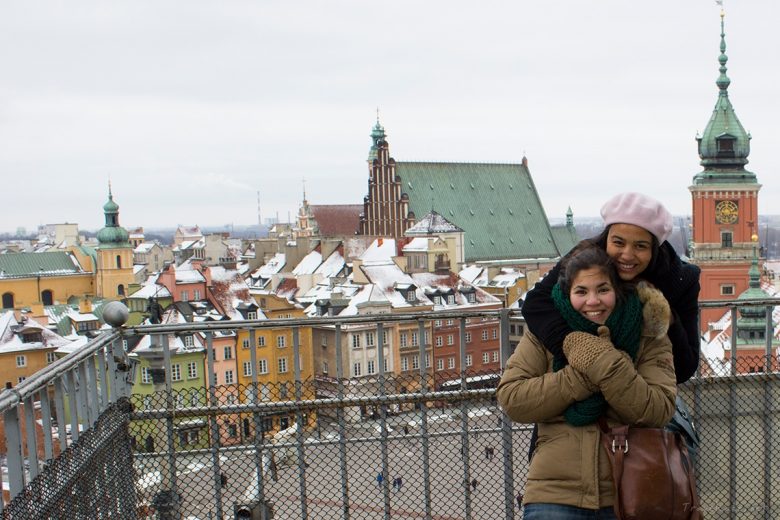A visit to the indigenous market of Otavalo in Ecuador is probably one of the most advertised activities in Quito’s guest houses and travel agencies. It’s said to be one of the largest and oldest indigenous market of South America and every single guide book will tell you it’s a must-do if you’re visiting the Quito area. That’s exactly the reason why I wasn’t sure if I’d want to go. (more…)
Tag: experiences
-
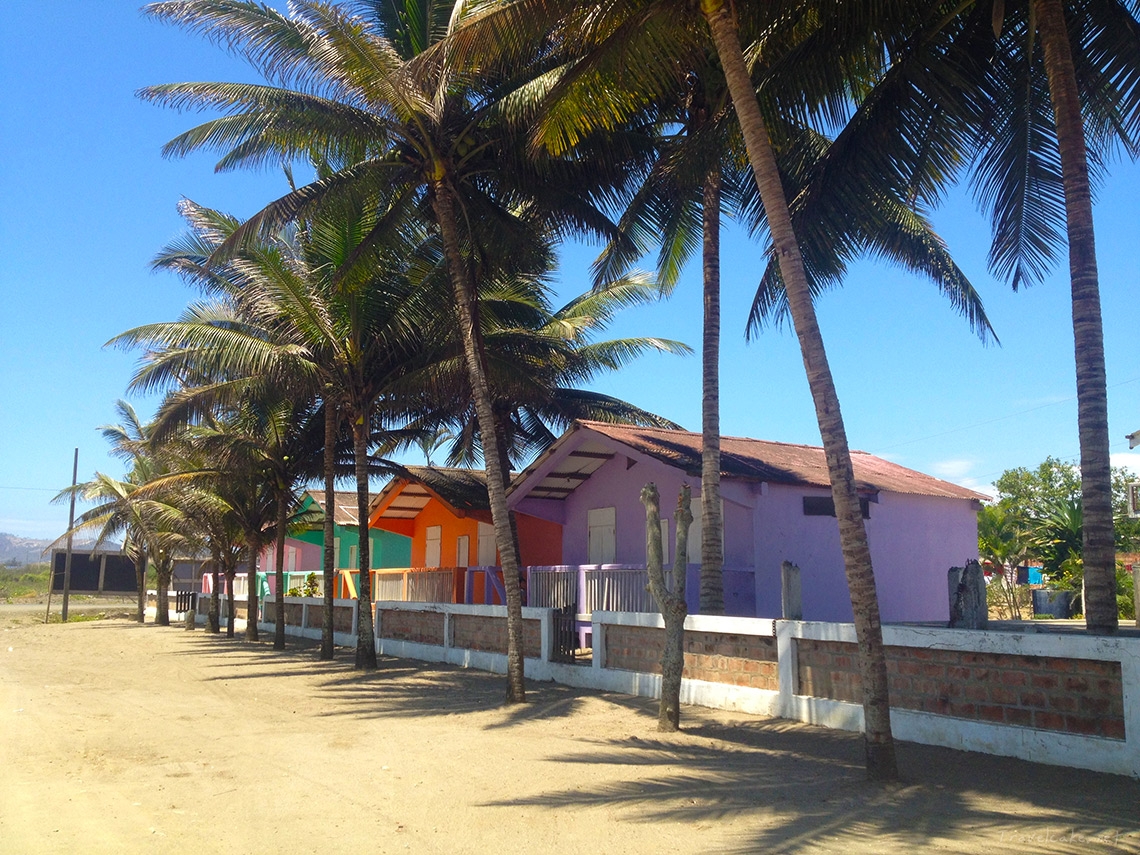
What it’s like to live in Puerto Cayo, Ecuador
You’ve probably never heard of Puerto Cayo.
Don’t feel bad, most people haven’t. Puerto Cayo is a sleepy fishing village on the Pacific coast that doesn’t have much more to offer than long stretches of sandy beach spotted with seashells and colourful pebbles. Yet, it’s where we chose to settle down for the largest chunk of our 4 month stay in Ecuador earlier this year. We loved our calm beach life and even though there was absolutely nothing going on, we were sad to leave. . Living in Puerto Cayo was a unique experience. It was life at it’s simplest.
So what is it like to live in an Ecuadorian beach village as a digital nomad?
As usual, we rented in a furnished house – Pasatiempo del Sur. This time, it was a beautiful apartment by the beach with a pool, a garden and a killer view over the sun setting in the ocean.
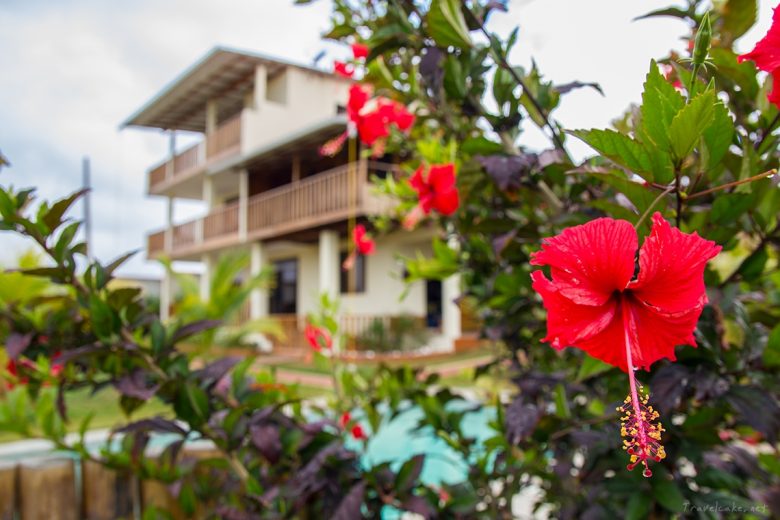
on the bottom floor, our beautiful apartment/house with shared pool, garden and pets A typical day would look like this:
WAKE UP SLOW – coffee and breakfast on the terrace
What I love and miss most about living in the tropics, is how early the days start. Your biorhythm adjusts to the sun, which rises and sets at approximately the same hour every day. There was no need for an alarm, we’d just wake up naturally around 7AM every morning as the sun brightened the sky. I would get out of bed with enough energy to make a fruit salad for breakfast to accompany our morning coffee/tea.
WORK-WORK-WORK
As the mornings are the coolest time of the day in Ecuador, we’d try to get as much work done as possible before temperatures would rise to their maximums.

Douglas ‘slaving away’ in the morning. LUNCH BREAK + SIESTA
By 11 AM the sun would burn so intensely, it was impossible to get anything done. The entire village would be deserted. Not just for lunch breaks but to escape the heat of the equatorial sun. We’d have a simple lunch at home or take a motor taxi to one of the many restaurants -if I can call them that- on the beach. But truthfully only a mad dog would be out and about around noon.
After lunch comes… siesta time! We would not actually sleep (although that happened a few times) but unwind, digest and escape the burning heat outside.
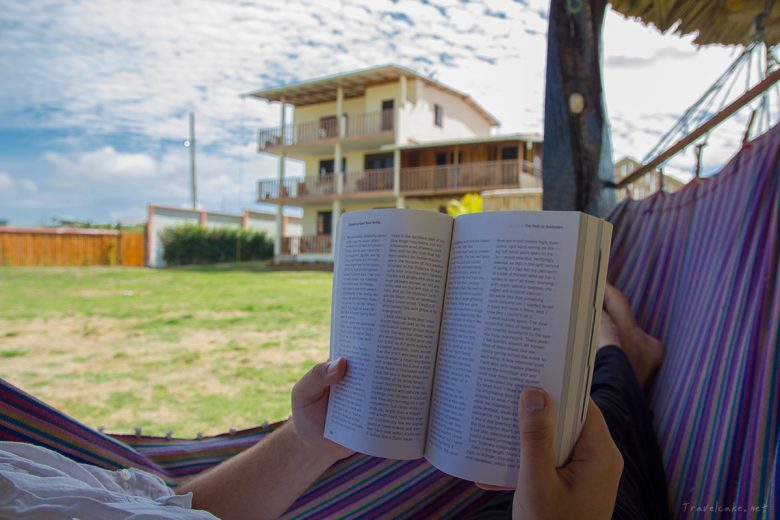
reading in the hammock BACK TO WORK + BEACH BREAK
By 3PM, it’s still steaming hot outside but more tolerable already. We’d stay inside and get some more work done. Once it started to cool down around 4 or 5 PM, we’d take a break to go for a splash in the ocean. How could you not, when you have a beach all to yourself?! We’d paddle in the waves and swim for about half an hour before returning to our work day.
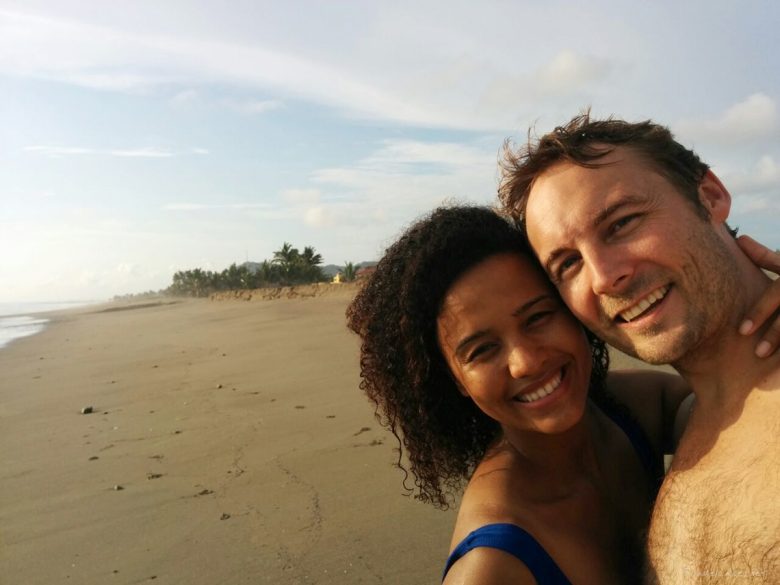
Splashing around, jumping and screaming like kids. As far as the eye can see, not a soul in sight After our swim, we would work outside; Douglas on his laptop and I cleaning the pool, watering the plants or doing some housework.
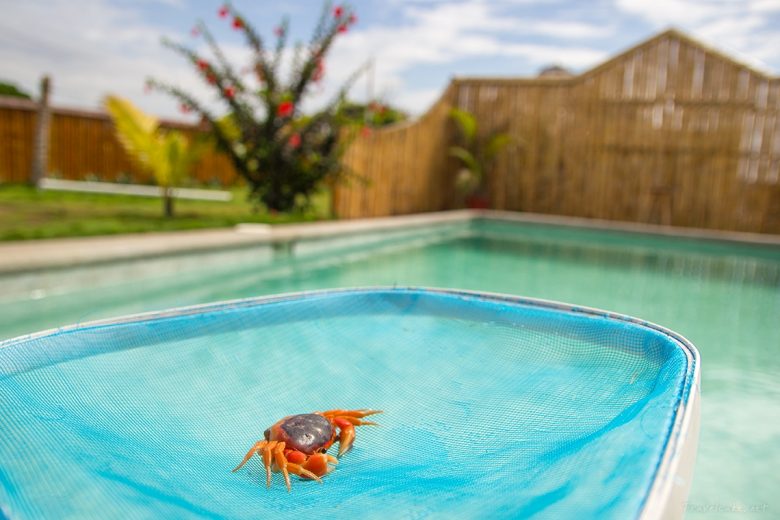
while cleaning the pool I would find these crabs, drifted off from the ocean APERO WHILE WATCHING THE SUNSET
We’d end our work day by pouring ourselves an “apero” (a drink before dinner) at sunset. Time to sit back and relax. The fact that there was nothing else to do, helped us appreciate nature’s spectacle. Whether we’d be home or in one of the fish shacks on the beach, we never missed the show!
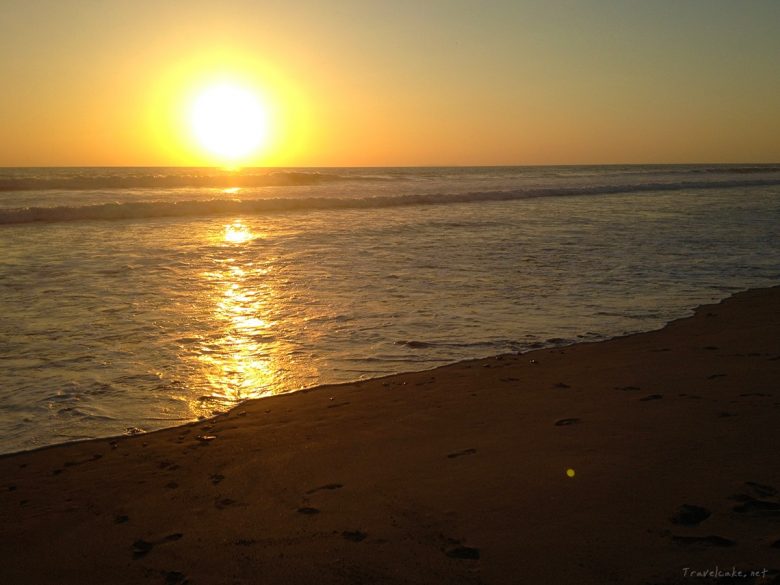
The sunset in Puerto Cayo was different every evening. I was amazed at how beautiful and -in a way- exciting life can be without entertainment, bars, friends… Just peace and quiet DINNER
Sometimes we’d cook our own dinner, other times we would go to one of the few restaurants in town. Options on their menus were limited to fish, fish, seafood or fish. Meat is a scarce commodity in Puerto Cayo.
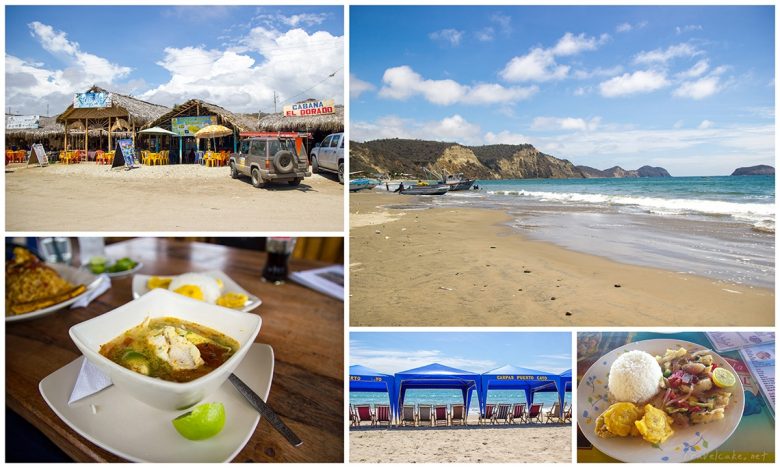
The food shacks on the beach during the day offering fish, fish or fish During the weekends we would laze around the pool, take long strolls on the beach, play with the dogs, go out for brunch or visit a neighbouring town. We learned to be content with uneventful weekends and enjoyed the low-keyed weeks as they drifted by.
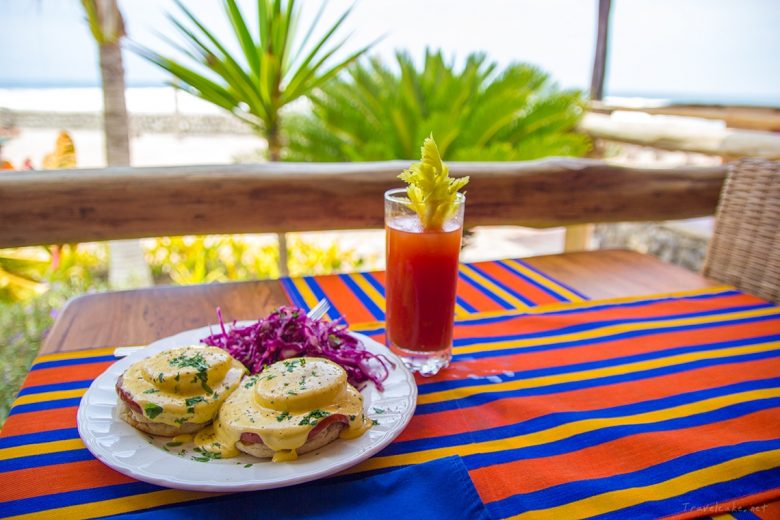
Fancy and delicious brunch in restaurant ‘El Alebrije’ on a sunday morning. Eggs Benedict and Bloody Mary. 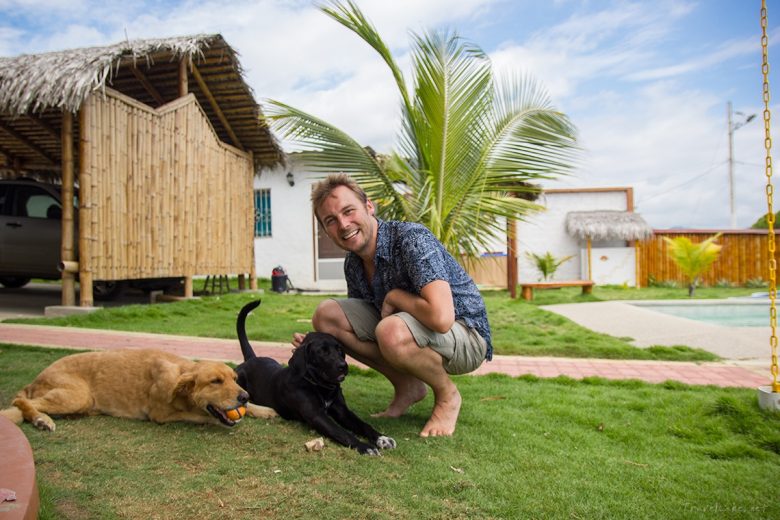
Since our lifestyle doesn’t allow us to have pets, we were thrilled to have our landlord’s dogs running around the grounds. Temporary pets to play with! 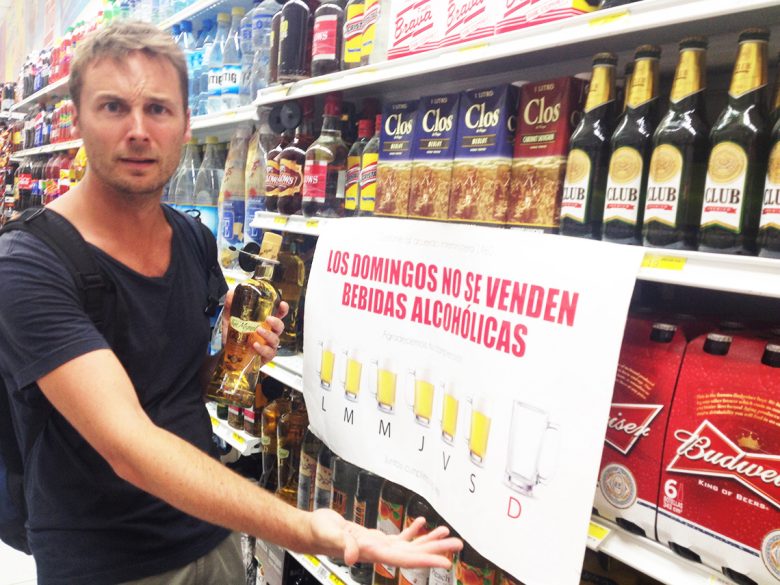
We learned all about the “no-alcohol-on-sundays” policy… On a sunday… Living in Puerto Cayo was a perfect way to get lots of work done and to save some money, as there were no distractions. We took it easy and truly lived in the moment which was a marvellous experience. We laughed and played like unconstrained children. We created our own joy and excitement. We let go of our worries and returned home with renewed energy and a new sense of serenity. In a way, living in Puerto Cayo was like going on one of those “find yourself” retreats. Another enrichment in our lives.
Could you see yourself living in a tiny town where there is nothing to do? Do you think you could find happiness in a place like Puerto Cayo?
The post “what it’s like to live in Puerto Cayo, Ecuador” first appeared on Travel Cake.
-
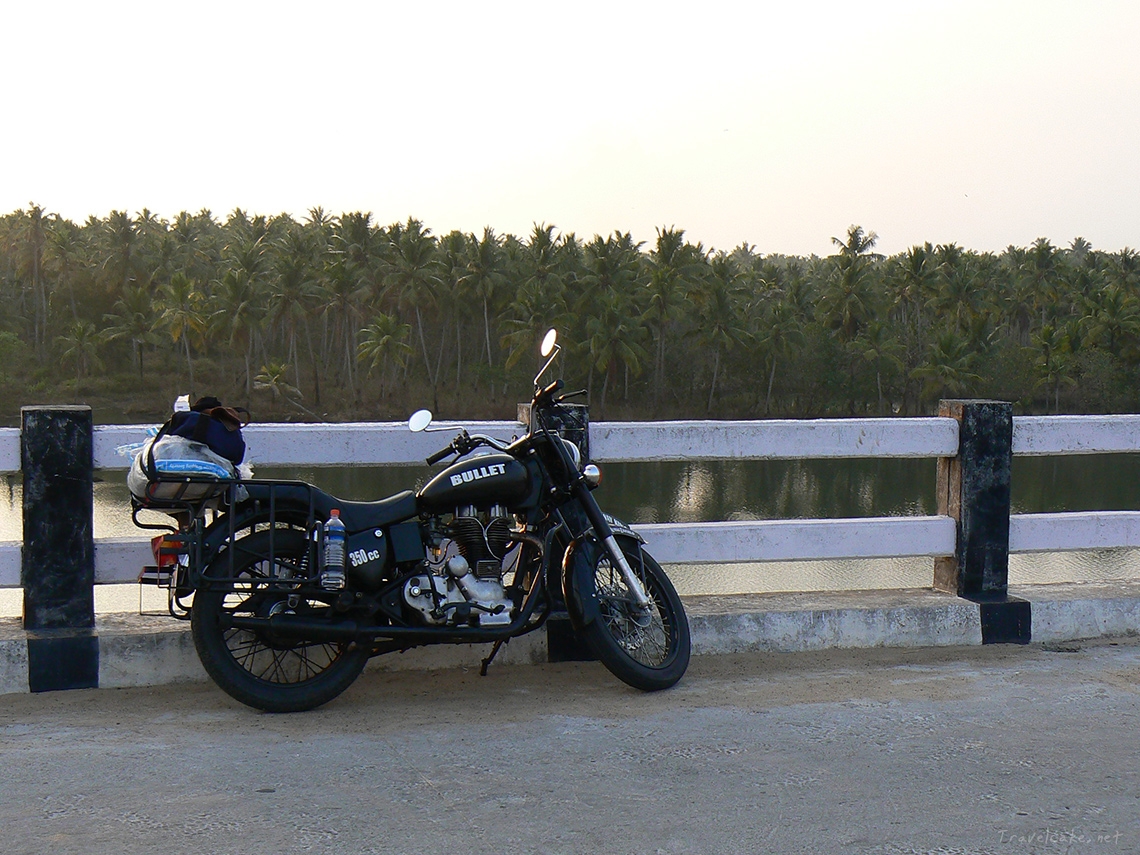
Motorcycling India
When I met my husband he charmed me with his vague plan to buy a motorcycle in India with which he’d traverse the country while documenting the journey on film. Ravished as I was, I didn’t really believe he’d pull through. But there I was, ten months later, on a plane to India to join in on the motorcycle adventure. A trip from South to North India on a 1979 Royal Enfield, “Bullet”.
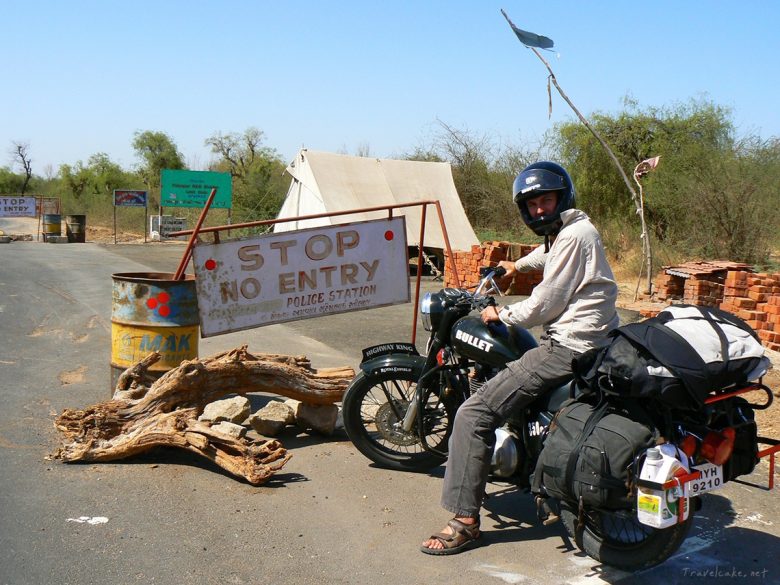
bizarre checkpoint along the way It would take a short novel to tell you the whole story, so I’ll stick to the most essential parts…
When I arrived in India Douglas and his travel mate had already bought motorcycles, driven through the most insane traffic situations, been severely ill and they’d had a few near death experiences. But worst of all, they’d just been robbed of thousands of dollars worth of filming equipment and the stories they had captured on film. That’s how we got acquainted with India’s police and red tape. I’ve blacked out the details, it really was that horrible.
The silver lining was that robbery happened in Varkala, a popular backpacker beach hangout perched on a steep cliff full of restaurants, bars and shopping stalls. So while we spent days at the police station fighting for paperwork to come through, we’d spend the rest of the time stuffing our faces with banana pancakes, drinking cool beers, joining spontaneous sing-alongs around the campfire and skinny dipping under the full moon with new found Scandinavian friends. You know, the usual backpacker’s stuff.
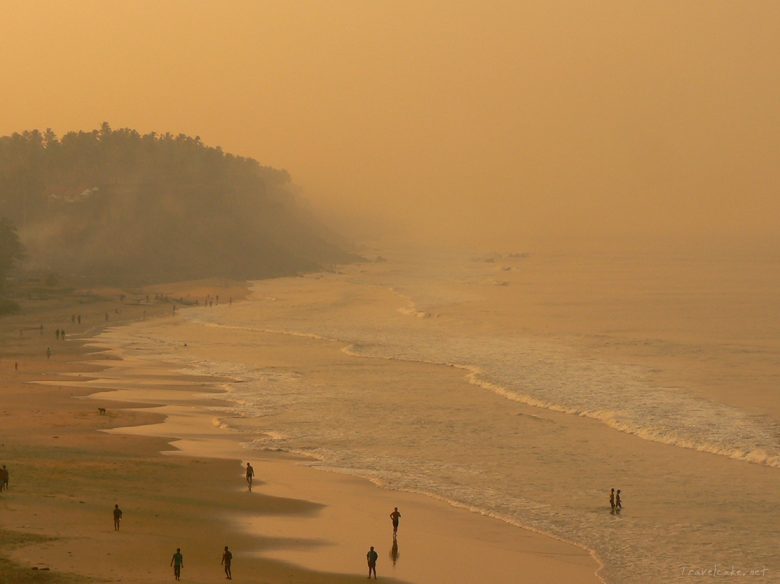
Varkala beach at sunset 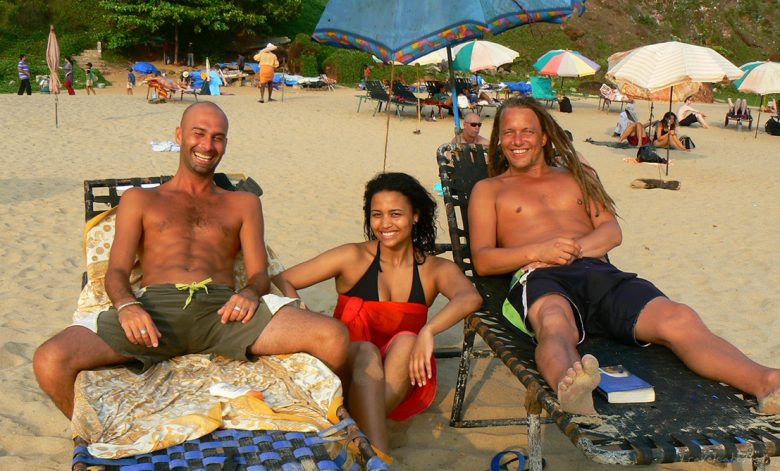
not a bad way to wait for paperwork to come through… After a week of frustration, we finally got the paperwork out of the way and were ready to leave the tourist Shangri-La to dig into the “real” India.
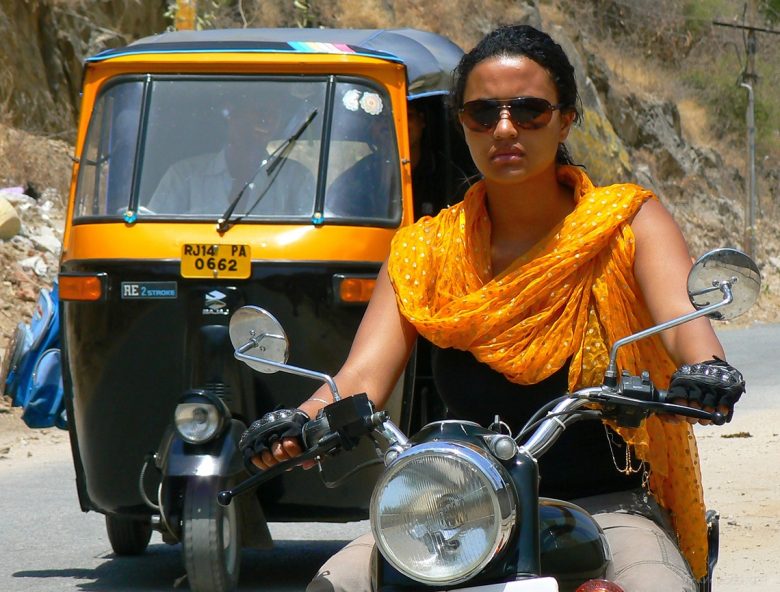
let’s go! With our backpacks strapped securely to the back of our motorcycle, we crossed the palm fringed Kerala. We parked “The Bullet” for a few days to spend some time gliding the backwaters on a houseboat.
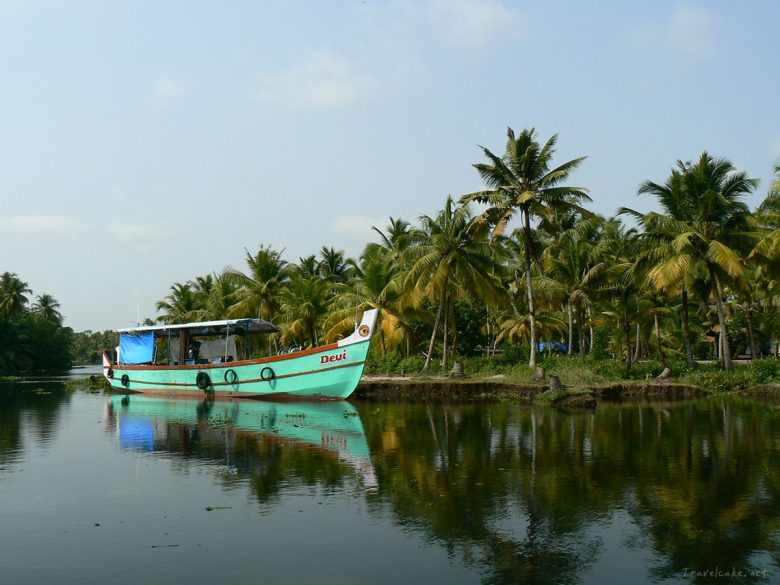
view from our houseboat We continued our trip passing through gorgeous landscapes and majestic cities…
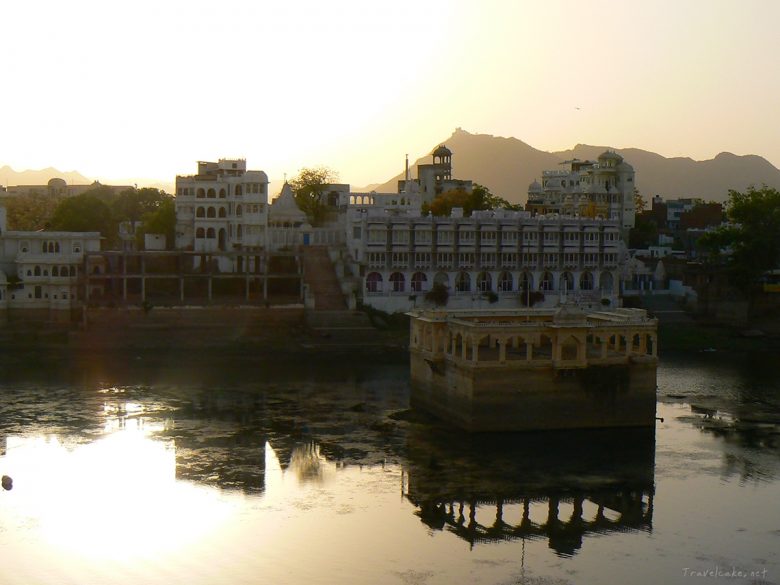
Udaipur …but also rather dull ones.
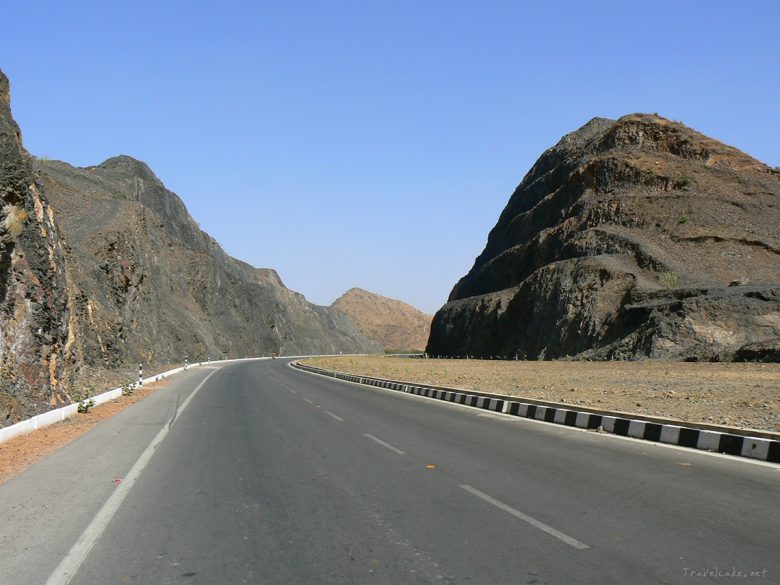
the hardest stretches were the ones with boring landscapes We would drive all day, taking lots of breaks…
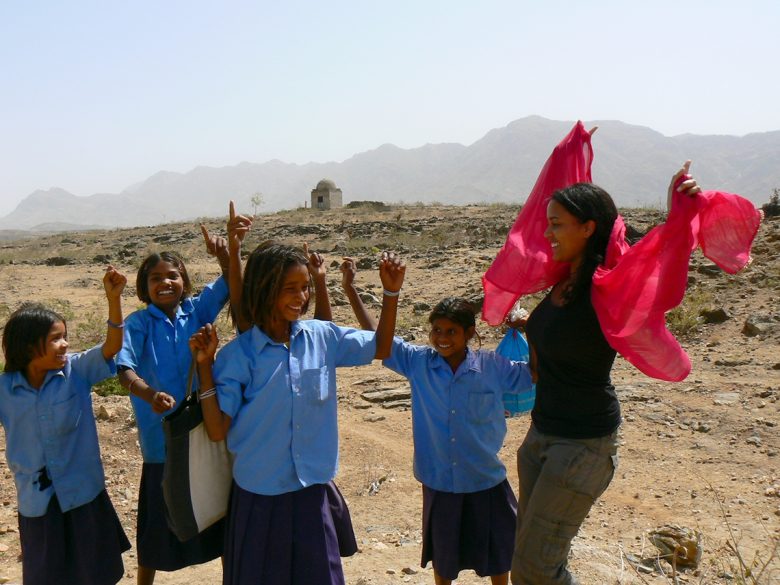
dancing with some school kids during the pee/stretch break in the middle of nowhere …and we’d look for a place to stay once the sun started to set. If we were lucky we’d find a quaint little room with a view but more often than not, we’d have to take whatever was available. Thus we got our fair share of bedroom cockroach encounters, rat dropping surprises and malfunctioning fans in temperatures of 40 C° at night. Or even worse: nosy staff showing up unannounced in our room at night under pretext they’d “need something” from inside… WTF?!
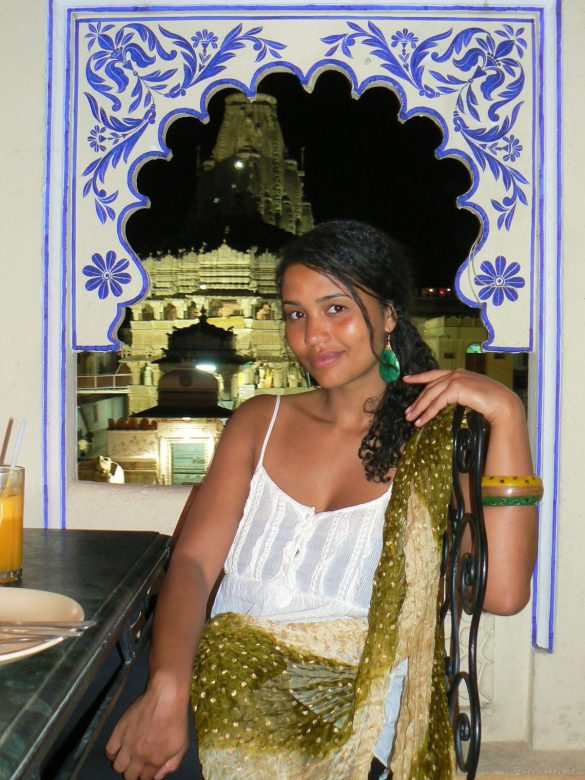
cockroach-free room with a view… The Bullet tagged along with us where ever we went, giving us the freedom to stop anywhere we wanted.
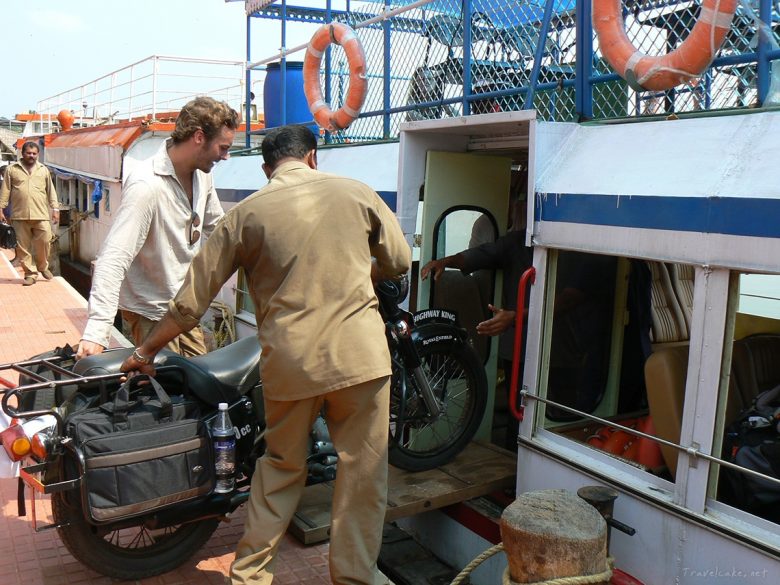
we took The Bullet on a passenger ferry to cross a river. In india everything is possible, all you need to do is ask. 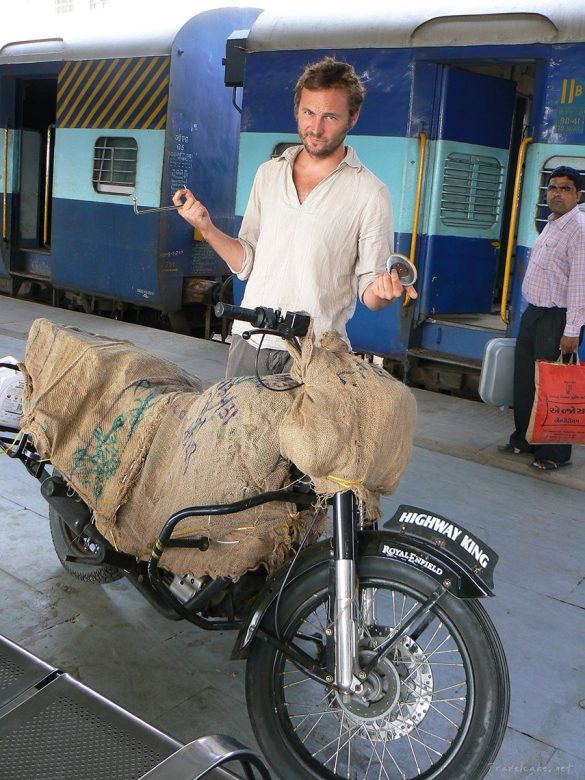
The Bullet got butchered on a a train ride… Our motorcycle broke down often. We’d have it repaired if we happened to be near a town. If not, we’d fix it ourselves. With tape and rope. Yep, that works sometimes.
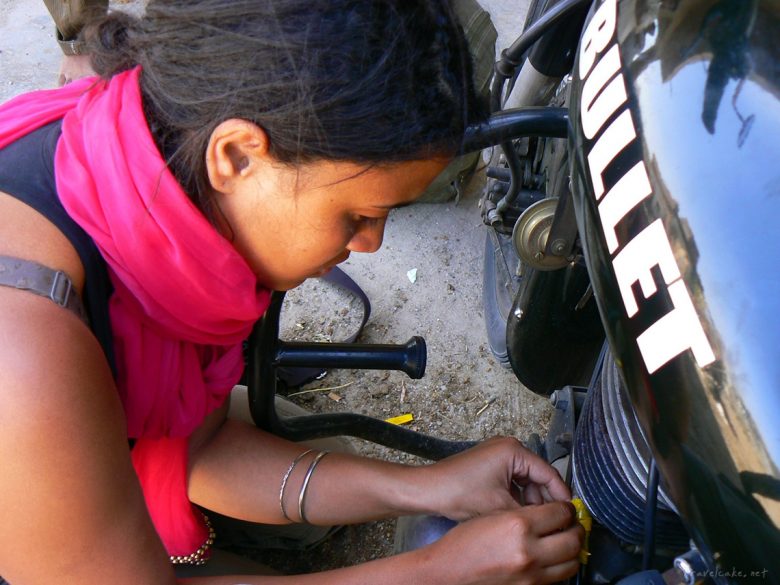
in cases of emergency, there is a mechanic in all of us But usually there were more than enough people spontaneously getting involved, trying everything they could to get The Bullet running.
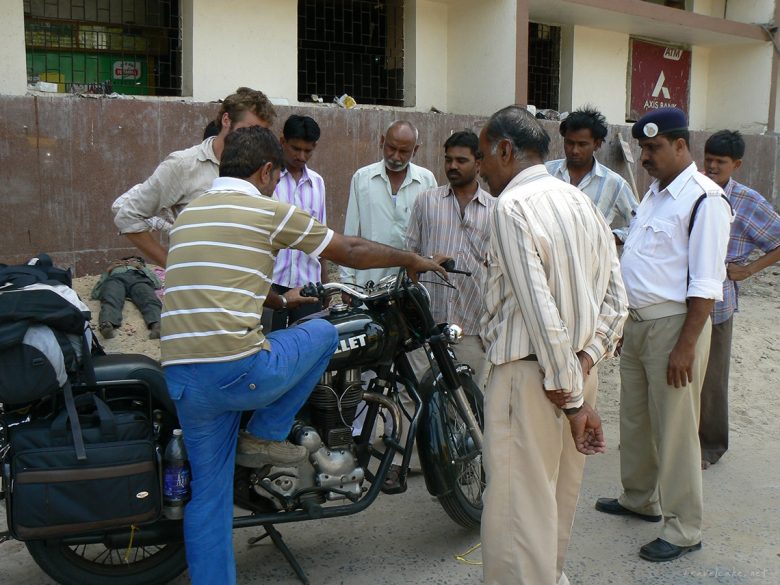
bystanders always got involved. Whether we’d want it or not. Traffic in and near cities was absolute madness. You never know what you’ll encounter while driving. Anything goes.
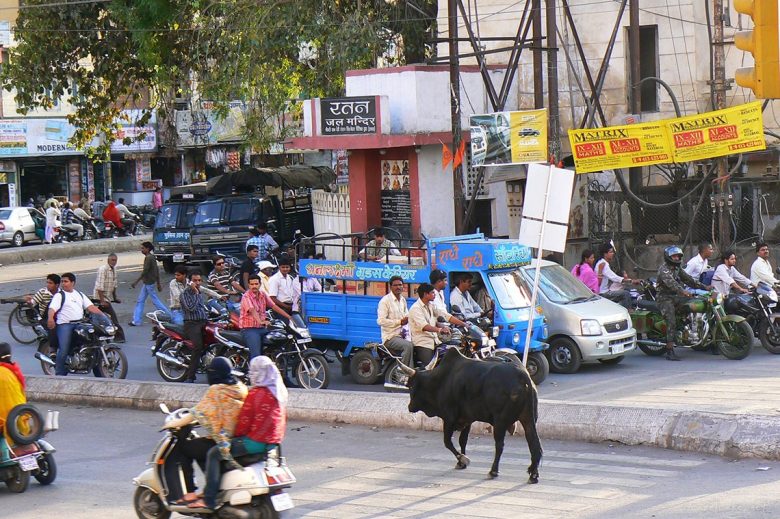
dodging cows became a daily activity 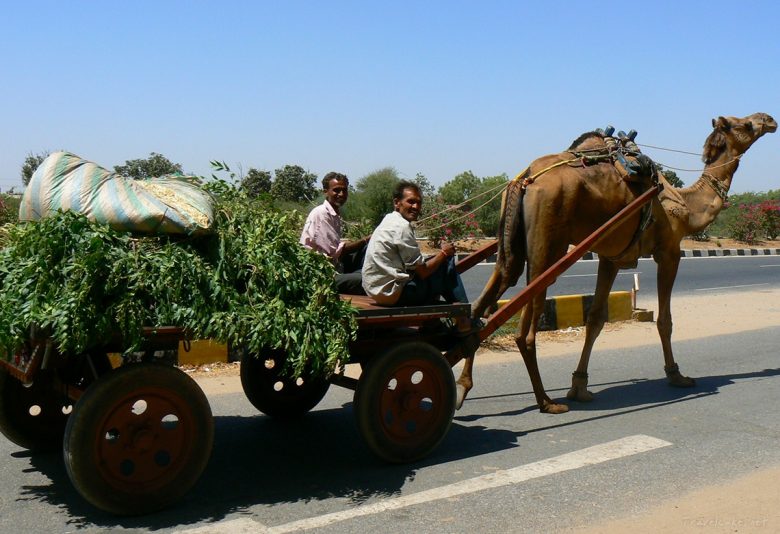
traffic was always interesting 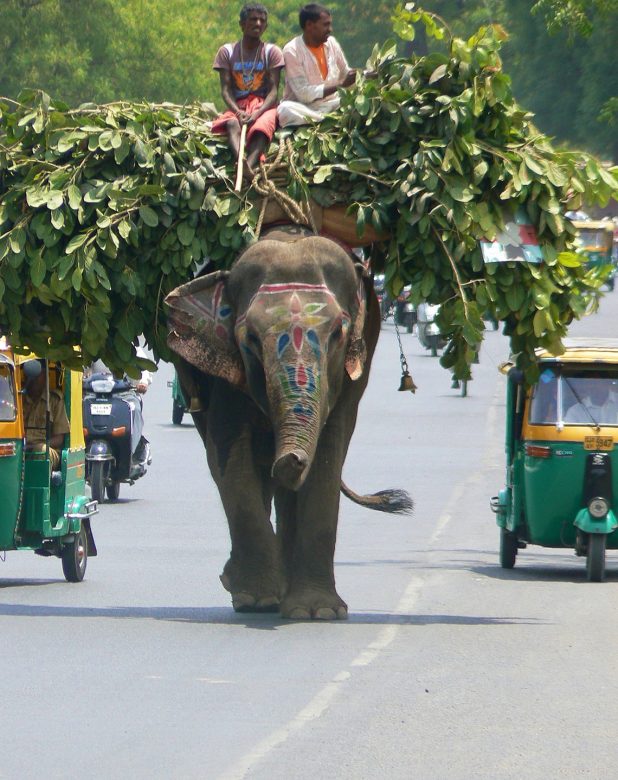
elephants: part of every-day encounters on the road… We met some interesting characters along the way.
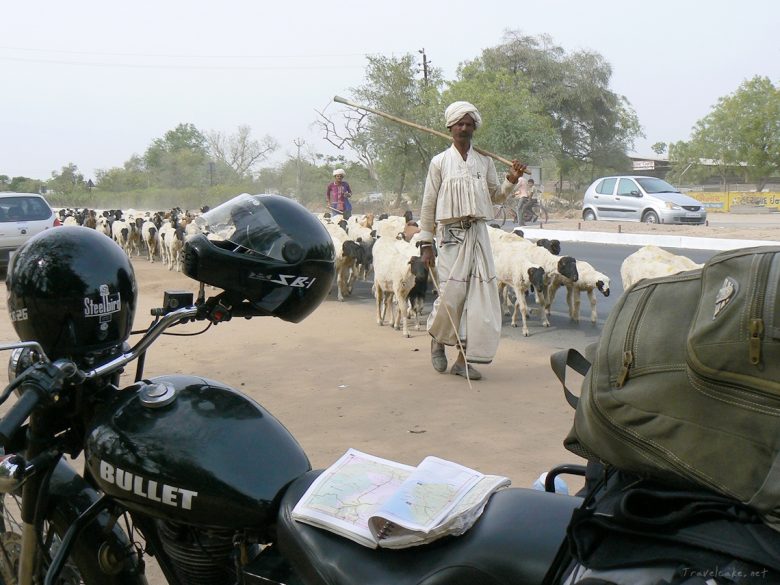
talking to fascinating characters like this made our breaks extra compelling. I was drawn by his fabulous top. We ate where the locals do.
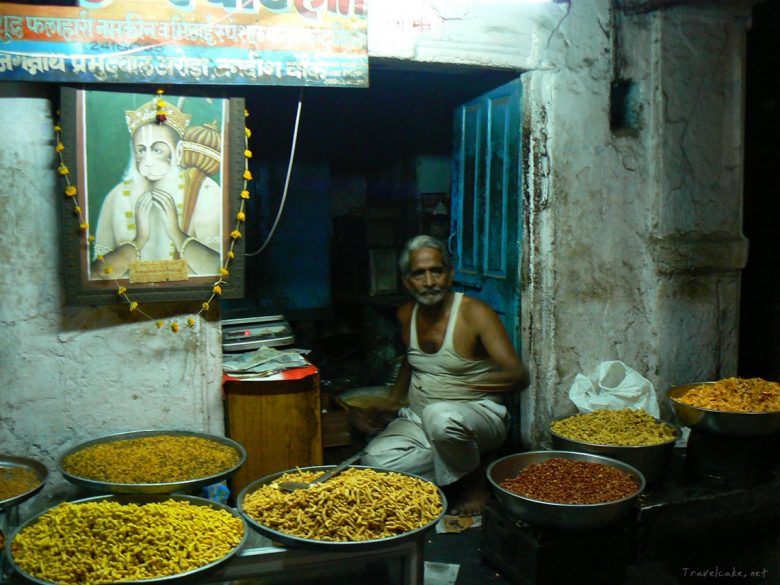
street food We tried to understand the essence of India. We were far from the tourist path and as close to life in small town India as possible. Even so, we knew we would never be able to truly make sense of things in this country. We are outsiders to the culture and always will be, no matter how hard we tried. To us, that’s the beauty of traveling in India.
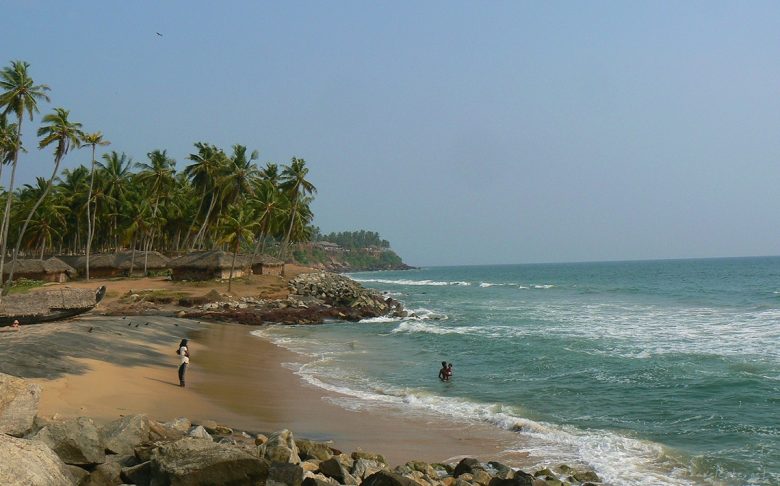
beach in Kerala My part of the journey ended in Delhi after having crossed the States of Kerala, Karnataka, Maharashtra, Gujarat and Rajasthan. Douglas continued further north through the Himalayas to Manali on his own.
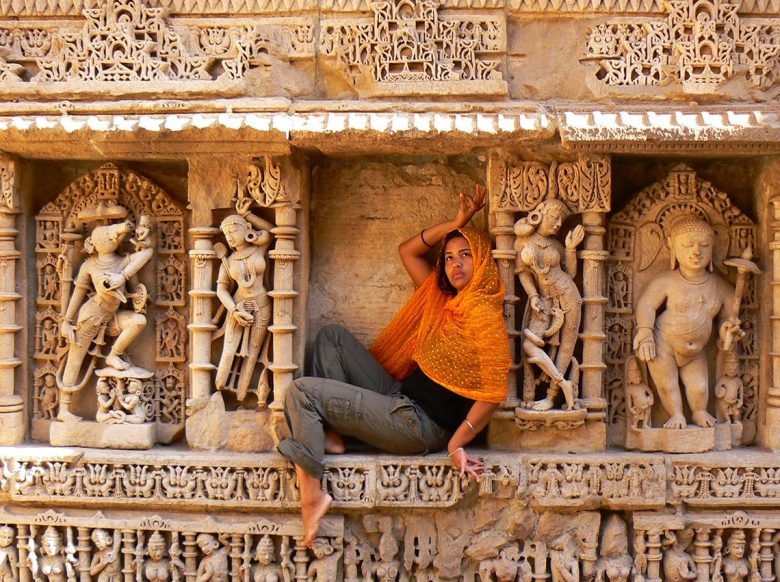
having our own set of wheels allowed us to discover forgotten temples and ruins along the way As you can imagine, insane things happened on this three month trip but as I mentioned earlier, it would take a novel to tell the full story. I would definitely rank this trip under the category “hardcore travel”.
Here are a few tips if you want to motorcycle through India:
1. Don’t. It’s dangerous. But if you really really must…
2. Travel in India without a motorcycle first. That way you’ll get to know the Indian way before taking on the responsibility of having to drive, deal with mechanics and cultural differnces, finding your way in sprawling cities… Only when you find that you can handle the Indian chaos, should you start to consider driving the motorcycle.
3. Upgrade your motorcycle’s horn. Make sure it’s loud enough to overpower the other horns. On Indian roads, it’s survival of the loudest.
4. Pack light, very light. It’s so much easier and more comfortable to drive with a light backseat. You may have noticed I’m wearing the same outfits in almost all of the pictures in this post. Do bring along some tape and rope, they always comes in handy!
5. Avoid cities and crowds. They’re complete mayhem.
6. If you are pressed with time, chose North India as your destination. The mountainous area north of New Delhi is far more laid back to drive through.
6. Finally and most importantly: Go with the flow. You can’t control most of what happens on the road. The sooner you accept that reality and let go, the sooner you’ll start enjoying the experience.
Motorcycling through India was not a relaxing trip. It was challenging, dangerous and frustrating. At the same time it was unlike anything else and incredibly rewarding. An epic journey for ever in our memories.
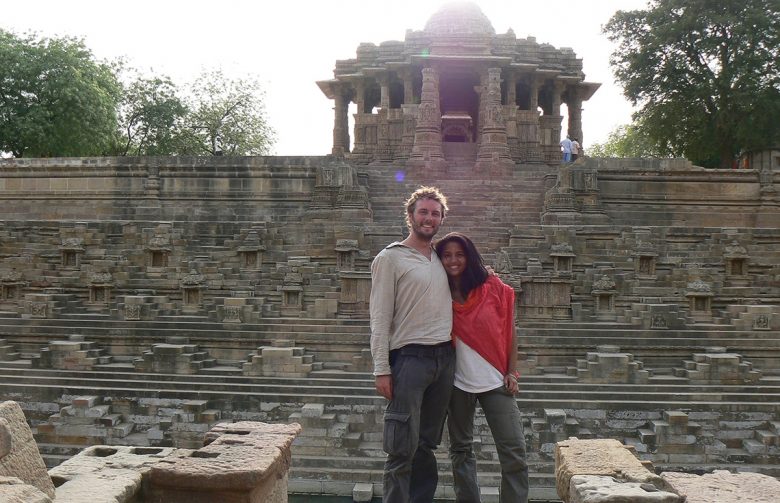
dirty, smelly and tired but 100% satisfied Have you traveled by motorcycle? Where? Would you motorcycle India?
The post “Motorcycling India” first appeared on Travel Cake.
